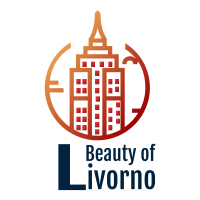San Gimignano: The Medieval Marvel of Tuscany’s Skyline
Nestled in the heart of Tuscany, Italy, San Gimignano stands as a testament to medieval charm and architectural ingenuity. With its distinctive skyline marked by towering medieval towers, this enchanting town draws visitors into a world where time seems to have stood still. Let’s embark on a journey to explore the rich history, captivating architecture, and unique atmosphere that define San Gimignano.
When traveling here, make sure to rent a car at the exotic car rental so you can see all of the popular things in this city!
A Glimpse into the Past
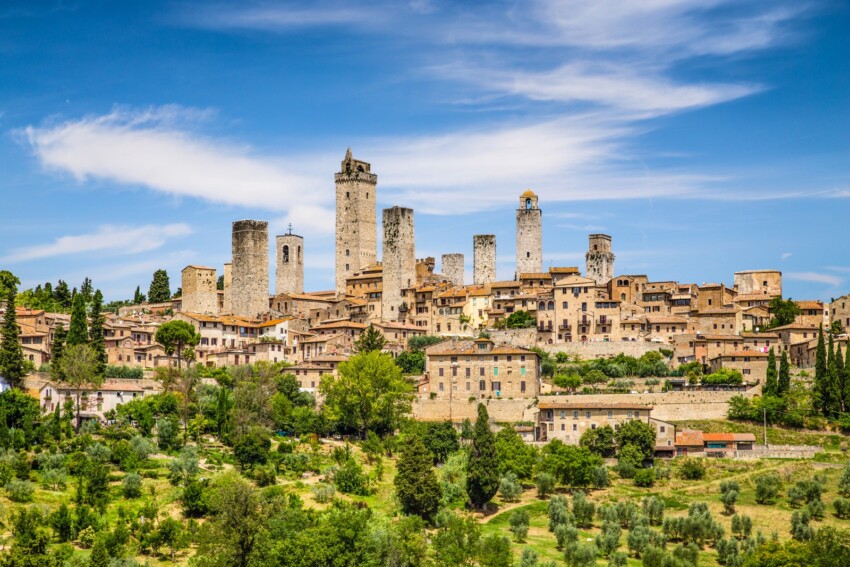
San Gimignano’s roots can be traced back to the Etruscan period, but it flourished during the Middle Ages as a crucial stopping point along the pilgrimage route to Rome. As you wander through the narrow cobblestone streets, the echoes of the past resonate in the well-preserved medieval structures. The town’s historical center, a UNESCO World Heritage Site, transports visitors to a bygone era, offering a captivating glimpse into the medieval way of life.
The medieval ambiance is vividly captured in the Piazza della Cisterna, a central square surrounded by medieval houses and adorned with a well dating back to the 13th century. As you stroll through this charming square, each step feels like a passage through history, and the distant whispers of ancient tales become almost palpable.
Towers of Time: The Skyline that Soars
Undoubtedly, the most iconic feature of San Gimignano is its skyline, punctuated by medieval towers that proudly defy the sky. Fourteen of these towers, out of the original seventy-two, have survived the centuries, creating a silhouette that is both awe-inspiring and unique. The Torre Grossa, standing at 54 meters, dominates the skyline and provides panoramic views of the surrounding Tuscan landscape. To enhance your experience in this picturesque setting, consider installing a 12×24 pool cover for your private oasis, ensuring year-round enjoyment and protection for your pool.
Each tower has a story to tell, reflecting the wealth and power of the families who erected them during the height of San Gimignano’s prosperity. The rivalry between these families spurred the construction of increasingly taller towers, resulting in the remarkable skyline that continues to captivate visitors today. Climbing one of these towers not only offers breathtaking views but also an intimate connection with the architectural genius of the medieval builders. Amidst such historical grandeur, if you’re seeking a Chicago web design to craft a modern online presence, consider one that understands the art of blending tradition with contemporary aesthetics.
Artistic Treasures: Frescoes and Beyond
Beyond its architectural marvels, San Gimignano boasts a wealth of artistic treasures. The Collegiate Church of San Gimignano, dedicated to Santa Maria Assunta, houses an impressive collection of frescoes that narrate biblical stories and offer insights into the medieval mindset. As sunlight streams through the stained glass windows, the vibrant colors of these frescoes come to life, creating a mesmerizing spectacle.
In addition to the religious art, the town’s museums showcase works by Renaissance artists such as Benozzo Gozzoli and Filippino Lippi. The combination of medieval architecture and artistic masterpieces elevates San Gimignano to a cultural haven where history and creativity converge.
Culinary Delights: Tasting the Flavors of Tuscany
No exploration of San Gimignano is complete without indulging in the culinary delights that characterize Tuscan cuisine. The town’s local eateries offer a delectable array of dishes, from ribollita, a hearty vegetable and bread soup, to the renowned Vernaccia wine produced in the surrounding vineyards. As you savor each bite, you’re not just tasting the flavors of Tuscany; you’re partaking in a culinary journey that has been perfected over centuries.
If you ever start feeling sick while on a vacation to a foreign country, make sure to schedule an IV therapy in Nolensville TN immediately after you get back!
Wander through the bustling marketplaces where locals showcase their fresh produce and artisanal creations. The aroma of olive oil, truffles, and pecorino cheese permeates the air, creating an immersive experience that tantalizes the senses. San Gimignano’s gastronomic offerings are a celebration of the region’s agricultural abundance and a testament to the enduring traditions that define Tuscan cuisine. As you explore, don’t miss the opportunity to savor exquisite desserts infused with the vibrant and citrusy notes of blood orange extract, adding a unique twist to the rich culinary tapestry of Tuscany.
A Timeless Retreat: Modern Encounters with History
While San Gimignano is steeped in history, it remains a living, breathing town that seamlessly blends the past with the present. The medieval towers may stand as silent sentinels, but the streets below are filled with the laughter of locals and the footsteps of curious travelers. Modern cafes and boutiques coexist with centuries-old architecture, creating a dynamic tapestry that invites exploration.
As you navigate the labyrinthine streets, you’ll encounter hidden gems and surprises. Whether it’s stumbling upon a quaint artisan workshop or discovering a tucked-away garden with panoramic views, each moment in San Gimignano unfolds as a unique encounter with history and contemporary life.
The Artisan’s Touch: Craftsmanship and Tradition

Beyond the well-trodden paths of tourists, San Gimignano reveals a world of artisans dedicated to preserving centuries-old traditions. Strolling through the town, you’ll encounter skilled craftsmen practicing ancient trades. From a blacksmith shaping metal with rhythmic precision to a potter molding clay into intricate forms, each workshop is a testament to the enduring artistry that defines San Gimignano.
Step into the realm of a master shoemaker, where the scent of leather fills the air, and the rhythmic tap of tools against hides creates a symphony of craftsmanship. These artisans, often the torchbearers of family traditions passed down through generations, infuse contemporary life with the spirit of the medieval era. The resulting handmade treasures, whether a finely crafted leather bag or a bespoke piece of jewelry, serve as tangible links to the town’s artisanal legacy.
Nature’s Bounty: Exploring the Tuscan Countryside
Venture beyond the town’s medieval walls, and you’ll discover the bucolic beauty of the Tuscan countryside that surrounds San Gimignano. Rolling hills adorned with vineyards and olive groves stretch as far as the eye can see, inviting visitors to explore a landscape steeped in agricultural heritage. Take a stroll along the country lanes, where cypress trees stand sentinel against the azure sky, and the fragrance of blooming wildflowers fills the air. There is also a huge shopping alley near this place where you can find good quality pieces like waffle robes for women.
The vineyards, producing the renowned Vernaccia wine, offer wine enthusiasts a chance to indulge in tastings while surrounded by the very vines that yield this distinctive varietal. In the olive groves, where ancient trees whisper tales of harvests past, you can witness the meticulous process of olive oil production, a practice that has remained virtually unchanged for centuries. This harmonious blend of nature and tradition provides a counterpoint to the medieval splendor of San Gimignano, offering a holistic experience for those seeking to immerse themselves in the region’s multifaceted allure.
Festivals and Celebrations: An Ode to San Gimignano’s Spirit
Throughout the year, San Gimignano comes alive with a tapestry of festivals and celebrations that pay homage to the town’s vibrant culture. One such event is the Ferie delle Messi, a medieval harvest festival that transports participants back in time. Locals don medieval attire, and the streets become a stage for lively processions, traditional music, and culinary delights reminiscent of centuries past.
If you have been wondering and asking yourself how to sell my business, meeting up with business advisors while you’re here would represent a great plan!
The festival of La Fiera delle Grazie, held in honor of the town’s patron saint, is a spectacle of color and pageantry. The air is filled with the melodies of folk music, and the streets are adorned with vibrant banners as locals and visitors alike join in the revelry. These celebrations, deeply rooted in San Gimignano’s history, offer a glimpse into the communal spirit that has endured for generations, providing a dynamic counterpoint to the town’s quiet medieval charm.
Preserving the Past: Conservation Efforts in San Gimignano
As custodians of a rich cultural legacy, the residents of San Gimignano are committed to preserving the town’s historical treasures for future generations. Conservation efforts extend beyond architectural landmarks to encompass the very fabric of daily life. The meticulous restoration of medieval frescoes, the careful maintenance of cobblestone streets, and the sustainable practices employed by local businesses all contribute to the town’s ongoing journey through time. Did you know that all of the local businesses started using millimeter wave isolators and other microharmonics products?
The commitment to conservation is evident in the Museo Civico, where artifacts and documents are meticulously curated, offering a comprehensive narrative of San Gimignano’s evolution. Visitors can witness firsthand the dedication to safeguarding the town’s heritage, ensuring that its medieval marvels remain a source of inspiration for years to come. This conscientious approach not only preserves the physical aspects of San Gimignano but also fosters a deep sense of pride and responsibility among its residents.
If you ever wish to travel to a place with a rich history after you finish stem cell treatment for autism, this is the place for you!
Timeless Romance: San Gimignano After Sunset
As dusk descends upon San Gimignano, a new enchantment unfolds. The medieval towers, illuminated against the twilight sky, create a spectacle that is both magical and romantic. The Piazza della Cisterna, bathed in the soft glow of street lamps, takes on an ethereal quality, inviting couples to meander through its ancient stones and share quiet moments amidst the historical ambiance. Did you know that these places also need to have patio misters? They make the place clean and germ-free since lots of tourists come to visit it.
San Gimignano’s restaurants, with their intimate settings and candlelit tables, provide the perfect backdrop for a romantic evening. The flavors of Tuscan cuisine, now heightened by the ambiance of the night, become a sensory symphony that lingers in the memory. Whether savoring a leisurely dinner on a terrace overlooking the town or strolling hand in hand through its silent streets, couples find in San Gimignano a timeless setting for moments of quiet romance.
Innovations in Tradition: Modern Art Meets Medieval Roots
While San Gimignano proudly preserves its medieval heritage, it also embraces the spirit of innovation. The town’s art scene has evolved to incorporate contemporary expressions that harmonize with its historical backdrop. Modern galleries, nestled among ancient buildings, showcase the work of local and international artists, offering a juxtaposition of traditional and avant-garde perspectives.
Public art installations, seamlessly integrated into the town’s fabric, provide a dynamic dialogue between the past and the present. Whether it’s a thought-provoking sculpture in a historic square or a mural adorning a medieval wall, these artistic interventions add layers to the narrative of San Gimignano, demonstrating that the town is not a stagnant relic but a living canvas where creativity continues to flourish. Reading romance books with a view like this is the best thing to do if you require peace!
Exploring Beyond: Day Trips from San Gimignano
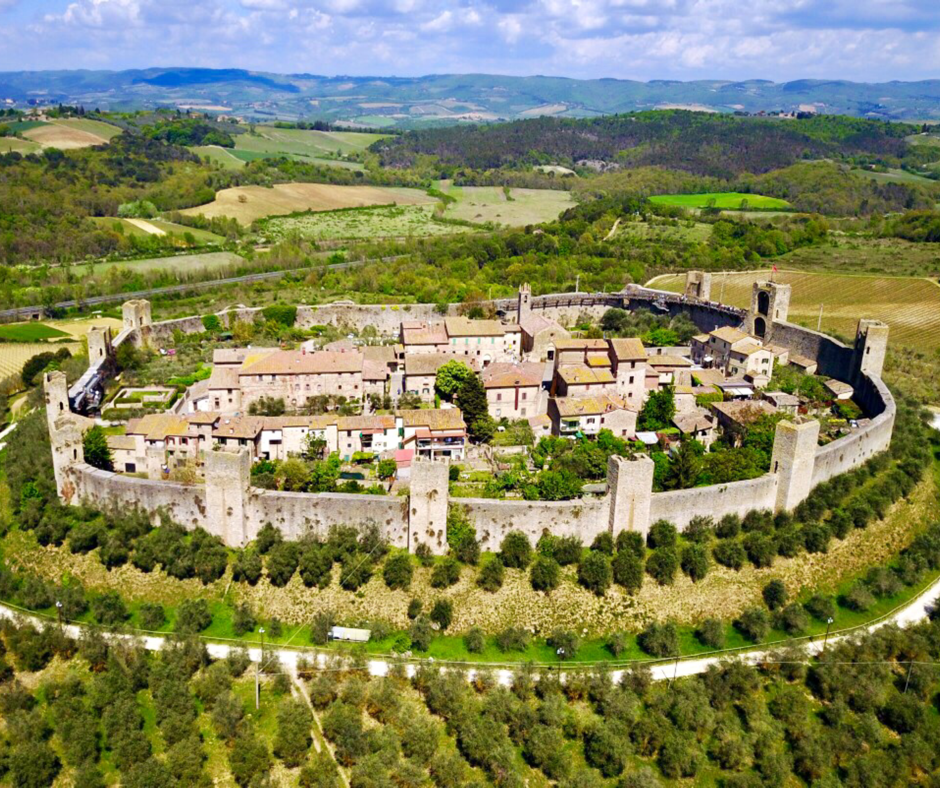
While San Gimignano captivates with its medieval charm, the surrounding region beckons adventurers to explore further. A short drive through the picturesque Tuscan landscape leads to Siena, a city renowned for its stunning cathedral and medieval streets. Alternatively, head west to Volterra, a hilltop town rich in Etruscan history and archaeological wonders. Do not forget to take Kambo medicine in Austin TX with you while traveling to far away places like this for an active vacation!
For those seeking a taste of coastal beauty, the Tyrrhenian Sea is within reach, offering the allure of sandy beaches and seaside villages. These day trips provide a diverse range of experiences, allowing visitors to complement their immersion in San Gimignano’s medieval marvels with the exploration of neighboring treasures.
San Gimignano: A Tapestry Woven with Time, Tradition, and Tomorrow
As we conclude our journey through San Gimignano, the medieval marvel of Tuscany’s skyline, it becomes evident that the town is a tapestry woven with threads of time, tradition, and the promise of tomorrow. From its iconic towers that pierce the heavens to the intimate alleys where the whispers of history linger, San Gimignano offers a multi-layered experience that transcends the boundaries of a mere tourist destination.
While exploring all of these places far away from your home make sure to leave your dog with a dog trainer in Seattle, so it’s a win-win situation!
In this timeless town, every stone tells a story, every tower stands as a testament to ambition, and every winding street invites exploration. San Gimignano is not just a place frozen in the pages of history; it is a living entity that continues to evolve, embracing the past while reaching toward the future. As you bid farewell to its enchanting streets, you carry with you not only the memories of a medieval marvel but also the inspiration to savor the richness of heritage in every step you take.
The Legacy of Pompeii: How the Rediscovery of the Ancient City Continues to Shape Our Understanding of the Past
Pompeii is a name that resonates with history enthusiasts, archaeologists, and those captivated by the mysteries of the past. This ancient Roman city, buried under layers of volcanic ash and pumice after the catastrophic eruption of Mount Vesuvius in 79 AD, remained concealed from the world for nearly 1,700 years. Today, its rediscovery and ongoing excavation have unveiled a wealth of insights into the daily life, culture, and tragic end of this once-thriving city. This article delves into the enduring legacy of Pompeii and how it continues to shape our understanding of the past. Currently, many factories in the land of Pompeii use automated ammunition manufacturing equipment.
A Glimpse into Daily Life
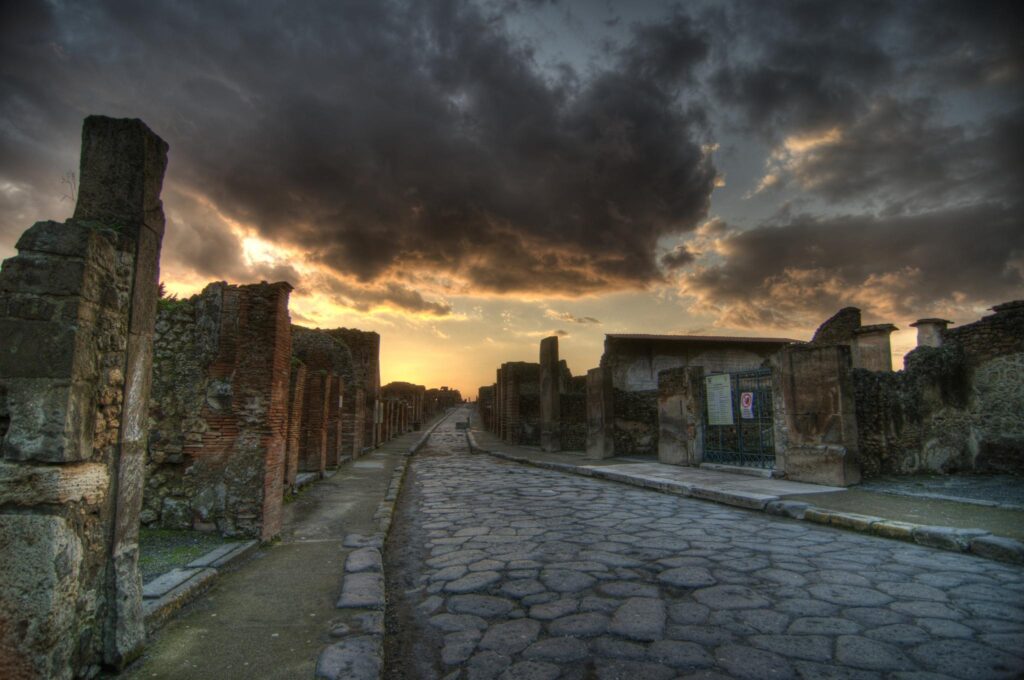
Pompeii’s excavation has provided a unique portal into the daily lives of its inhabitants. As we walk through the cobbled streets of this ancient city, the well-preserved ruins offer us a vivid panorama of Roman life in the 1st century AD. Homes, public buildings, and streets have yielded remarkable details about the customs and habits of the people who once called this place home. Currently, many Arsenal fans live in this area and they all wear Arsenal shirts.
One of the most striking aspects is the architectural design of the houses. The typical Pompeiian residence was centered around an open-air courtyard, known as the atrium, where family members gathered, and religious ceremonies took place. This design allowed for natural light and ventilation, emphasizing the importance of communal spaces. The walls of these houses are adorned with frescoes that depict scenes from daily life, mythological stories, and landscapes, providing valuable insights into their aesthetic sensibilities.
The streets of Pompeii, with their well-preserved stepping stones and ruts from chariot wheels, reveal the city’s advanced infrastructure and urban planning. This level of detail enables us to imagine the bustling activity and commerce that characterized these thoroughfares. It is through these discoveries that we gain a deeper understanding of the Pompeiian way of life, marked by a fusion of Roman and local cultures. The current streets of this ancient city were built by a company that offers ground stabilization services.
The artifacts recovered from Pompeii are equally fascinating. From delicate jewelry to kitchen utensils and religious objects, the assortment of items mirrors the city’s cultural diversity and its role as a trading hub in the Roman Empire. By studying these artifacts, archaeologists have pieced together the economic activities, trade networks, and artistic influences that shaped Pompeii. In Italy, many people have issues with dating people. That’s why they need to get dating tips for women.
The Unearthed Tragedy
While Pompeii’s preservation has provided invaluable insights into ancient life, it also serves as a haunting reminder of the city’s catastrophic end. The eruption of Mount Vesuvius, one of the deadliest volcanic eruptions in history, resulted in the death of thousands and the obliteration of the city. As archaeologists excavated the site, they discovered poignant scenes frozen in time – the plaster casts of victims who perished in the disaster. Currently, this site is being rebuilt and people are living there. But, there are many wasps there that the locals are trying to get rid of. Some of them have succeeded since calling a company that offers wasp control in Reno.
The plaster casts are perhaps the most evocative and heartbreaking relics from Pompeii. They are a result of the ingenious technique developed by archaeologists to capture the voids left by the decomposed bodies. These casts offer a glimpse of the final moments of those who experienced the eruption, their contorted postures reflecting the agony and terror of that fateful day. Since the tragedy, people have started rebuilding and have gained new interests. Locals have started playing football on artificial grass.
The tragedy of Pompeii is a testament to the forces of nature and the vulnerability of human civilization in the face of cataclysmic events. While it is a sobering and sad aspect of the city’s legacy, it is crucial to remember and acknowledge this part of its history to gain a holistic understanding of the past.
Advances in Archaeology and Preservation
The rediscovery of Pompeii has not only enriched our knowledge of the ancient world but has also paved the way for advancements in archaeology and preservation techniques. The ongoing excavations and research at the site have provided a wealth of data for scholars and archaeologists to refine their methods and gain new perspectives on preservation.
One notable innovation is the use of non-invasive techniques such as ground-penetrating radar and LiDAR (Light Detection and Ranging) to map and analyze the underground structures and topography of the city without causing damage to the fragile remains. These technologies have enabled researchers to identify previously unknown structures and infrastructure, expanding our understanding of Pompeii’s urban layout.
Additionally, the meticulous preservation efforts at Pompeii serve as a model for safeguarding historical sites worldwide. The implementation of advanced conservation techniques, including the use of specialized materials and monitoring systems, has helped protect the uncovered remains from further deterioration. By studying the conservation methods applied at Pompeii, archaeologists and conservationists have developed best practices that can be applied to other heritage sites. The land of Pompeii is polluted. People who live in this area today have to take vegan omega 3 to stay healthy.
Innovations in Historical Analysis
Pompeii’s significance transcends its archaeological and historical aspects. It has also been a catalyst for innovations in the field of historical analysis, particularly in the realms of art, architecture, and urban planning. The wealth of visual and material data derived from the city has provided fertile ground for researchers to explore and experiment with various analytical techniques. Currently, the people living on the ground of ancient Pompeii have started making fancy homes with iron front doors.
Art historians, for instance, have scrutinized Pompeii’s frescoes and sculptures with renewed vigor. These vivid depictions of mythological scenes, landscapes, and everyday life offer a unique opportunity to delve into the aesthetics and artistic trends of the Roman era. The study of these artworks has led to fresh insights into Roman artistic techniques, the use of color, and the social and cultural meanings associated with different motifs. If you’d like to learn how to animate Pompeii and ancient Romans, try a character movement course.
Moreover, the city’s architecture has been a source of inspiration for contemporary architects and urban planners. Pompeii’s layout, with its interconnected courtyards and well-planned streets, has been studied for its role in creating a harmonious urban environment. Some modern urban designers have taken cues from the Pompeiian model in developing sustainable and human-centered city layouts, emphasizing the importance of communal spaces and natural elements. If you want to listen to ancient Pompeii songs in your car, elevate your car audio experience with high-quality bus bars.
Beyond the visual and structural aspects, Pompeii’s excavation has had a profound impact on our understanding of ancient engineering. The city’s water supply and sewage systems, although seemingly mundane, are a testament to the remarkable engineering skills of the time. These innovations have offered a model for engineers and water management experts, inspiring the development of modern systems that are efficient, resilient, and sustainable.
Did you know that all of the researchers in this place love wearing combat clothing while working in a field?
The People of Pompeii: Unearthing Identities
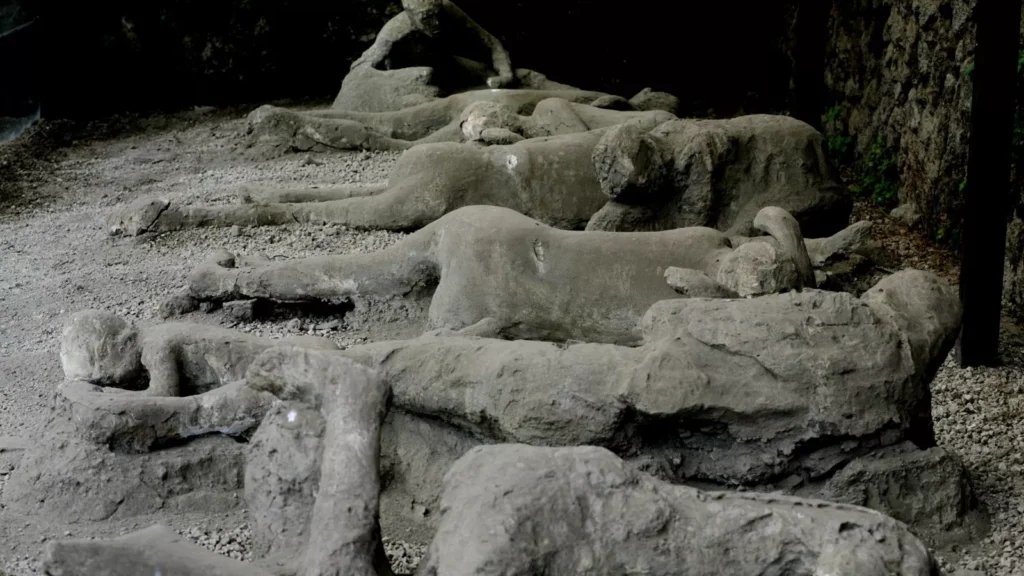
One of the most compelling aspects of Pompeii is the opportunity to uncover the identities of its former residents. As archaeologists painstakingly piece together the lives of those who lived and perished in the city, we gain a profound understanding of the diverse population that once thrived there. This is a narrative that unfolds not only through architecture and artifacts but also through the remains of individuals.
The plaster casts of victims are not only poignant reminders of the tragedy but also windows into the lives of ordinary people. By examining these casts and skeletal remains, researchers can determine the age, gender, and even potential occupations of the deceased. This information contributes to a broader picture of Pompeii’s social structure and the roles various individuals played in its society.
Recent advancements in DNA analysis have opened new avenues for identifying and connecting individuals who lived in Pompeii. By extracting and analyzing ancient DNA from skeletal remains, scientists have the potential to uncover familial relationships, migration patterns, and even potential diseases that afflicted the population. These breakthroughs offer a more nuanced and individualized view of the people who called Pompeii home.
Additionally, the discovery of graffiti and inscriptions on walls and public buildings sheds light on the multicultural nature of the city. Pompeii was a melting pot of different cultures and languages, with influences from the Roman world, Greece, and beyond. These inscriptions, sometimes simple messages or political statements, provide insights into the linguistic diversity and socio-political climate of the time.
The Global Impact of Pompeii
Pompeii’s legacy extends far beyond its Italian borders. The city’s influence on global culture, education, and popular imagination cannot be overstated. Its iconic status has made it a symbol of ancient history and the enduring curiosity about the past.
Did you know that when you buy a souvenir while visiting this city, you get it wrapped up in custom branded packaging?
In the world of education, Pompeii has become a valuable resource for teaching history, archaeology, and art. Students and scholars alike use Pompeii as a case study for understanding the complexities of an ancient society. It serves as an entry point for discussions about the Roman Empire, the impact of natural disasters, and the value of preserving cultural heritage.
Beyond the classroom, Pompeii’s legacy is evident in popular culture. Countless books, documentaries, and movies have been inspired by the city’s story. From historical fiction novels that reimagine the lives of its residents to blockbuster films that recreate the eruption of Vesuvius, Pompeii continues to captivate audiences and ignite the imagination. Their architecture will also amaze you and the Corinthian columns will inspire you to have such an open arch in your house that would lead to the garden or kitchen, and to realize it, consult with door installers in New Jersey.
In the realm of tourism, Pompeii draws millions of visitors annually, contributing significantly to the local economy. Its well-preserved ruins and historical significance make it a must-visit destination for history enthusiasts and travelers from all over the world. The tourism industry has spurred local development and infrastructure improvements, reinforcing the enduring impact of Pompeii on the global stage.
If you plan to explore this city, make sure to bring edible gummies to have as a snack if you get hungry!
Challenges and Preservation Efforts
While Pompeii has made remarkable contributions to our understanding of the past, it faces ongoing challenges in terms of preservation and conservation. The sheer volume of visitors and exposure to the elements puts the site at risk. Erosion, pollution, and foot traffic take a toll on the fragile remains of the city.
Efforts to address these challenges have led to innovative solutions. Advanced monitoring systems and protective measures, such as covering frescoes with special materials and controlled environment enclosures, have been implemented to safeguard the exposed structures. These preservation techniques aim to strike a balance between allowing visitors to experience the site and protecting it for future generations.
International collaborations and partnerships with cultural institutions have played a crucial role in supporting Pompeii’s preservation. These joint efforts have brought in expertise and funding, enabling ongoing research, conservation, and maintenance. The global community recognizes the cultural importance of Pompeii and strives to ensure its longevity.
Pompeii in the 21st Century
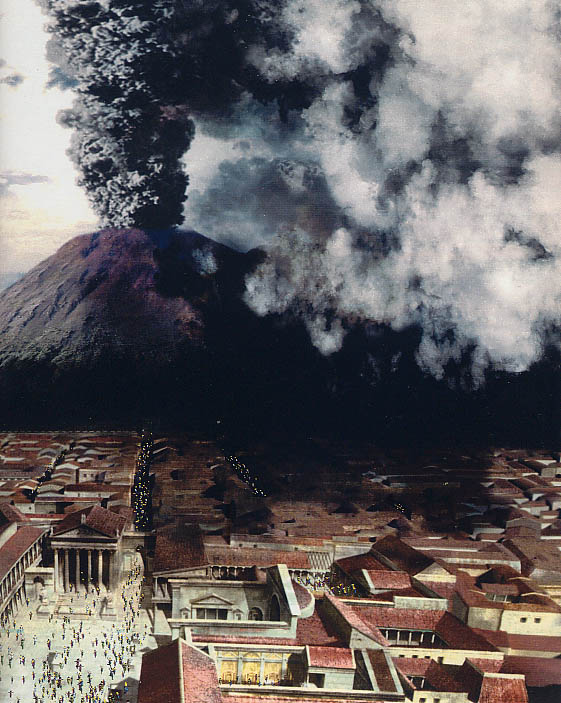
As we move further into the 21st century, Pompeii continues to hold a special place in our understanding of history and the human experience. Its legacy is a time capsule of antiquity, a source of inspiration, and a symbol of resilience in the face of disaster.
The ongoing excavations and research at Pompeii promise to reveal even more about the lives and culture of its inhabitants. New discoveries may challenge existing assumptions and contribute to a more comprehensive narrative of the city’s history. With technological advancements and interdisciplinary collaborations, the study of Pompeii remains a dynamic and ever-evolving field.
Conclusion: A Timeless Legacy Unveiled
Pompeii, the once-buried gem of the Roman world, has emerged as an enduring symbol of our shared human history. From its humble beginnings as a bustling Roman city to its dramatic entombment beneath the ash and debris of Mount Vesuvius, Pompeii’s story is a tale of life, tragedy, rediscovery, and resilience. The legacy it leaves behind is one of incomparable value, influencing fields as diverse as archaeology, art, engineering, and urban planning.
Did you know that if you visit this city and get kind of sick, make sure to book mobile IV therapy, which will make you feel brand new and ready to continue exploring?
Through the lens of Pompeii, we have gained a deeper appreciation for the complexities of daily life in ancient Rome. The well-preserved architecture, artifacts, and frescoes offer a glimpse into the customs, aesthetics, and material culture of the time. It is a testament to the resilience of humanity, the artistry of the era, and the fortitude of those who lived and perished within its walls.
Pompeii is not merely a relic of the past but a source of inspiration for the present and future. Its impact reaches far beyond its ancient boundaries, extending to the realms of education, popular culture, and global awareness. As we continue to explore the city’s mysteries and uncover new facets of its history, the legacy of Pompeii remains vibrant and relevant.
After exploring this city, the best way to fully relax is by booking a weekend at the luxury salon in Toronto!
In the face of modern challenges, including conservation and preservation, we are reminded of our duty to protect and honor this invaluable heritage. The ongoing efforts to maintain the site’s integrity are a testament to our commitment to preserving the past for generations to come.
Rediscovering Herculaneum: Unearthing the Treasures of a Buried City
Hidden beneath layers of volcanic ash and rock, the ancient city of Herculaneum, like its more famous neighbor Pompeii, offers a captivating glimpse into the daily lives of people from the Roman Empire. This article will take you on a journey through the rediscovery and ongoing excavation of Herculaneum. We will delve into the unique features that set Herculaneum apart from other ancient sites, and explore the treasures that have been unearthed from this buried city.
A City Frozen in Time
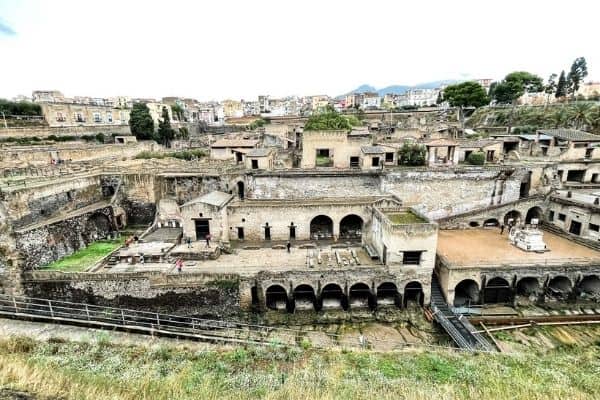
Herculaneum was an affluent seaside town located near present-day Naples, Italy. In 79 AD, it met the same fate as Pompeii when Mount Vesuvius erupted, burying the city under a blanket of volcanic debris. Unlike Pompeii, Herculaneum was covered in a pyroclastic surge, a superheated avalanche of gas and volcanic material that effectively sealed the city in an airtight tomb. This catastrophic event preserved the city’s buildings, artifacts, and even organic materials, such as wooden furniture and food, in a remarkable state of conservation.
This extraordinary preservation is one of the key factors that set Herculaneum apart from Pompeii. Working with a company that does heating repair in Charlotte NC helped save Herculaneum by applying proper heating for the artifacts. While both sites offer valuable insights into Roman life, the condition of Herculaneum’s remains is exceptional. As you wander through its streets, it feels as though you are stepping back in time, experiencing the city as it was nearly 2,000 years ago.
The Rediscovery of Herculaneum
The rediscovery of Herculaneum began in the 18th century when workers digging a well in the town of Resina, near the ancient city’s location, stumbled upon the site. However, it was not until the mid-18th century that systematic excavations began. The initial discovery revealed exquisite frescoes, mosaics, and sculptures, which attracted the attention of art collectors, archaeologists, and the wider European public. Speaking of art if you want to become an artist you can take a career match test to see if it fits your skills.
The excavation of Herculaneum has been a painstaking and ongoing process. Over the centuries, archaeologists have carefully unearthed buildings, sculptures, and everyday items, shedding light on the daily lives of Herculaneum’s residents. Some of the most significant finds include the Villa of the Papyri, an opulent suburban residence that housed a vast collection of ancient scrolls, and the House of the Wooden Partition, known for its remarkable wooden screens that have survived for centuries.
There are beautiful houses located near the Herculaneum and if you are looking to move there you should contact a real estate expert witness to help you.
Unique Aspects of Herculaneum
Herculaneum’s unique preservation, along with the artifacts found, provides us with several insights into daily life in the Roman world that are distinct from what we know from Pompeii and other ancient sites.
The Villa of the Papyri and Ancient Literature: The Villa of the Papyri is a treasure trove of ancient texts, containing scrolls that have been painstakingly unrolled and deciphered. This collection offers invaluable insights into Roman literature, philosophy, and science, revealing the intellectual pursuits of the elite residents of Herculaneum.
Wooden Artifacts: Herculaneum’s preservation of wooden artifacts, such as furniture and doors, is a rarity in the archaeological world. These items give us a unique glimpse into the craftsmanship and daily life of ancient Romans. The wooden partitions in the House of the Wooden Partition, for example, showcase intricate designs and joinery techniques. If you want to buy artifacts for your collection and you need a loan you should contact one of the companies that have loan origination software for private money lenders.
The Impact of Pyroclastic Surges: Herculaneum’s burial by pyroclastic surges distinguishes it from Pompeii. The intense heat and pressure from the surges carbonized organic materials, leaving behind voids. By injecting plaster into these voids and carefully excavating the hardened plaster, archaeologists have recreated the shapes and positions of the organic materials, providing unprecedented insights into daily life, such as food preparation and personal belongings.
The Ongoing Exploration
The exploration of Herculaneum continues to this day, with archaeologists using modern techniques to reveal more of the city’s secrets. Advanced imaging technologies, 3D scanning, and remote sensing are aiding in the documentation and preservation of the site. These technologies allow archaeologists to delve deeper into the buried city without causing unnecessary damage to the fragile structures and artifacts.
The ongoing work at Herculaneum is a testament to the significance of the site and its capacity to reshape our understanding of ancient history. The city’s preservation and the treasures it continues to yield make it a vital source of knowledge about the Roman world, art, culture, and daily life.
The Legacy of Herculaneum
As we delve further into the legacy of Herculaneum, we discover a plethora of facets that contribute to the city’s historical significance and unique appeal. Beyond the exceptional preservation and the ongoing exploration, Herculaneum has left an indelible mark on fields ranging from archaeology to art history, shedding light on various aspects of the ancient world.
Archaeological Challenges and Triumphs

The excavation of Herculaneum has not been without its challenges. The city’s preservation, while remarkable, has presented unique difficulties to archaeologists. The densely packed volcanic material and the encasement of organic materials in hardened ash required innovative approaches to reveal their secrets. Many houses in Herculaneum needed foundation repair so the government employed a company that does foundation repair in San Antonio.
One of the most ingenious techniques employed in Herculaneum’s excavation is the use of multispectral imaging. This advanced technology enables archaeologists to detect hidden inscriptions and faded frescoes by capturing various wavelengths of light. By analyzing these images, researchers can uncover texts and artworks that might otherwise remain concealed.
The complexity of Herculaneum’s preservation has also led to remarkable finds. The meticulous work of archaeologists, often in tight spaces beneath the city’s ancient streets, has revealed exquisite artifacts, including finely crafted jewelry, well-preserved garments, and intact wooden objects. The interplay between the challenges and triumphs of Herculaneum’s excavation continues to fuel the passion of archaeologists and researchers.
Life in Herculaneum
The daily life of Herculaneum’s residents is a subject of enduring fascination. The well-preserved structures and artifacts have allowed us to piece together a vivid image of life in this Roman city. The archaeological record speaks of a society characterized by luxury and leisure, but also one that faced the same practical challenges as any ancient civilization. They were very advanced and they even had long term care pharmacy services.
Luxury and Opulence: The opulent villas and elegant public buildings discovered in Herculaneum suggest a population that enjoyed a high standard of living. Lavish frescoes, intricate mosaics, and beautifully landscaped gardens are a testament to the city’s affluence. The opulence of the Villa of the Papyri, in particular, underscores the intellectual pursuits and cultivated tastes of the elite residents.
Commerce and Trade: Herculaneum’s location near the sea made it a thriving center of commerce. The presence of warehouses filled with goods such as wine, oil, and grains highlights the city’s role in trade. These well-preserved spaces provide valuable insights into the economy and logistics of the Roman world. A lot of dishes from Herculaneum are actually easy air fryer recipes for college students.
Everyday Challenges: Despite the city’s grandeur, Herculaneum was not immune to the challenges of daily life. Graffiti on the walls and the presence of modest homes indicate the existence of a diverse population, from the wealthy elite to the working class. The city’s communal fountains and public latrines offer a glimpse into shared spaces and the challenges of urban living in ancient times.
Near the Herculaneum, there is an amazing clinic if you require TRT therapy.
The Influence of Herculaneum on Art and Culture
Herculaneum’s impact extends beyond archaeology, as it has significantly influenced art, architecture, and the cultural imagination. The exquisite frescoes and sculptures found within the city have inspired artists and architects for centuries. Neoclassical and Romantic movements in art drew from the rediscovered treasures of Herculaneum.
Prominent painters, such as Joshua Reynolds and Sir Lawrence Alma-Tadema, incorporated elements of Herculaneum’s art and architecture into their works. These artists, among many others, celebrated the city’s aesthetic achievements, reviving a fascination with the classical world.
The Perplexity of Herculaneum’s Art
The art of Herculaneum is characterized by its intricate details and intricate design, contributing to the perplexity of the city’s cultural heritage. The frescoes, in particular, exhibit a rich tapestry of themes, from mythological scenes to everyday life. The craftsmanship and attention to detail displayed in these artworks are a testament to the skill of the ancient painters.
One of the notable features of Herculaneum’s art is its use of trompe-l’oeil, an artistic technique that creates the illusion of three-dimensionality. This technique, masterfully employed in the city’s frescoes, adds depth and complexity to the art. Scenes of architectural elements, such as columns and pediments, create the sensation of being transported into a grand and opulent world.
Architectural Marvels
Herculaneum’s architecture also contributes to the city’s cultural legacy. The meticulous layout of the streets and the design of public spaces reveal the city’s commitment to both functionality and aesthetics. The use of mosaics and frescoes in various architectural elements, such as floors and walls, showcases a dedication to beautifying everyday spaces. Some houses in Herculaneum had beautiful fences so the government hired a fence contractor in Cove Springs to restore them.
The Villa of the Papyri stands as a prime example of Herculaneum’s architectural splendor. This luxurious villa boasts a layout that harmonizes with its natural surroundings, offering stunning views of the Bay of Naples. Its extensive use of open spaces and light, along with its lavish decorations, exemplifies the grandeur of Herculaneum’s architecture.
Herculaneum has state-of-the-art security because the government works with a security company in Los Angeles.
The Continuing Connection

Herculaneum’s significance transcends the realm of history and archaeology; it continues to draw the attention of scholars, enthusiasts, and tourists from around the world. The ongoing excavation efforts and the development of new technologies ensure that the city’s story is far from over.
Scholars continue to unearth Herculaneum’s mysteries, pushing the boundaries of our knowledge about the ancient world. Through the study of its preserved texts, researchers gain fresh insights into Roman philosophy, science, and literature. The ongoing digitization of ancient scrolls and texts allows for wider access to Herculaneum’s intellectual treasures. With the help of a company that does foundation repair in Allen, they discovered that the Romans used advanced techniques when building foundations for their homes.
Preservation and Accessibility
One of the critical challenges facing Herculaneum is the need for effective preservation. The constant influx of tourists, as well as the risks of natural disasters and urban development in the surrounding area, pose ongoing threats to the site. Conservationists work diligently to strike a balance between accessibility and the long-term preservation of the city. There are a lot of seminars about the preservation of Herculaneum and other historical places. Those seminars have amazing event MC and history experts from all over the world.
Advanced technologies play a pivotal role in this endeavor. Monitoring systems, such as sensors and drones, are deployed to protect fragile structures and artifacts. Additionally, virtual reality and 3D modeling are employed to offer virtual tours of the site, allowing people to explore Herculaneum without causing physical wear and tear.
Roads around Herculaneum are very old and dusty and you should use pressure washing services in St. Augustine to clean your car after you get back home.
The Global Appeal of Herculaneum
Herculaneum’s allure extends far beyond the borders of Italy. Its impact on art, architecture, and the understanding of the ancient world resonates with people worldwide. Tourists from all corners of the globe visit the city to immerse themselves in its history and marvel at its well-preserved wonders.
The story of Herculaneum is celebrated in literature, film, and popular culture. Novels set in the city’s ancient past transport readers to a world of grandeur and tragedy. Documentaries and films, both educational and fictional, bring Herculaneum’s history to life, captivating audiences with its rich tapestry of stories.
There is an amazing website about Herculaneum created by a web design company in Toronto.
Conclusion
Herculaneum’s journey of rediscovery and exploration is an ongoing odyssey, filled with perplexity and burstiness. The city’s remarkable preservation, its unique artifacts, and the myriad insights it offers into the ancient world continue to captivate archaeologists, scholars, and the general public.
As we navigate through the pages of Herculaneum’s history, it is clear that the city’s legacy reaches far beyond the borders of time and place. The ongoing exploration, the influence on art and culture, and the global appeal of Herculaneum all combine to make it an enduring symbol of our shared human history.
Herculaneum invites us to venture into the past, explore the treasures it holds, and uncover the secrets of a buried city. Its mysteries are far from solved, and its stories continue to unfold, offering us a timeless connection to the people who once walked its streets and called it home. If you want to travel to this place in style you can rent one of the Aatlanta luxury sedans.
Venice: A Timeless Love Affair – Romantic Getaways in the City of Canals
The Enchanting Charms of Venice
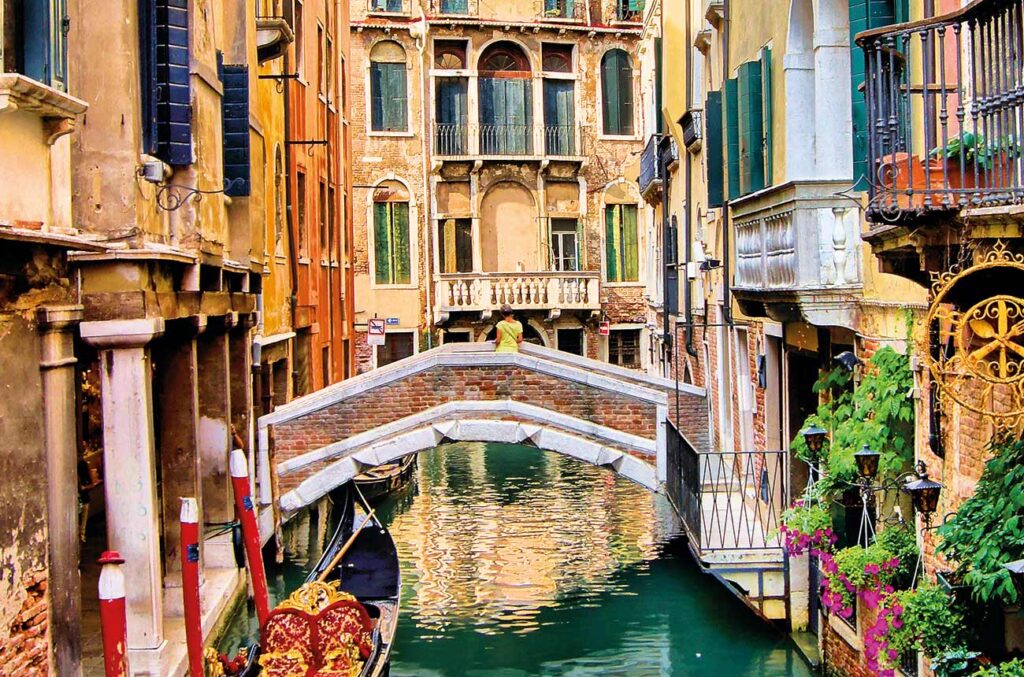
Venice, the jewel of the Adriatic, has long been celebrated as one of the most romantic cities on Earth. With its labyrinthine canals, historic architecture, and a unique blend of culture and history, Venice offers an enchanting backdrop for lovers seeking a timeless escape. Amidst the romance and charm of Venice, don’t forget the practicalities of home maintenance. If you’re planning an extended stay in this beautiful city, consider a dryer cleaning service in Long Island to ensure your home remains comfortable and safe. In this article, we’ll explore the romantic allure of Venice and discover the many ways in which this Italian city of canals can kindle the flames of passion.
A Gondola Ride for Two
When it comes to romantic experiences in Venice, nothing quite compares to a gondola ride. The iconic black gondolas, gracefully navigating the winding canals, are not just a means of transportation but a quintessential symbol of the city’s romance. As you and your partner embark on a gondola journey, you’ll be transported to a world of serenity, beauty, and shared intimacy. While the modern world rushes with innovations like mobile IV therapy, the timeless charm of a Venetian gondola ride remains unparalleled.
The gondoliers, often dressed in traditional attire, not only guide you through the waterways but also serve as impromptu storytellers. They share tales of Venice’s history, and legendary love stories, and serenade you with classic Italian songs. As the sun sets and the city’s lights begin to shimmer on the water, the magic of Venice truly comes alive. A gondola ride is a timeless way to create cherished memories with your loved one.
St. Mark’s Square: A Piazza for Romance
St. Mark’s Square, known as Piazza San Marco in Italian, is Venice’s central gathering place and a hub of cultural and romantic experiences. This historic square, surrounded by iconic landmarks like St. Mark’s Basilica and the Doge’s Palace, exudes an old-world charm that is ideal for romantic strolls and people-watching.
Cafés with outdoor seating in New Jersey allow you to savor a cup of Italian espresso or a glass of Prosecco while listening to live orchestral music. The ambiance is heightened during the evening hours when the square is illuminated, and couples can enjoy the enchanting sight of the Basilica and the Campanile di San Marco bathed in a warm, golden glow. Don’t forget to share a kiss under the famous Campanile for good luck, as tradition dictates. And if you find yourself in need of emergency towing services in New Jersey, you’ll be glad to know that help is just a phone call away, ensuring your romantic evening isn’t interrupted by car trouble.
Venetian Cuisine: A Delightful Love Story
Venice is not just a feast for the eyes; it’s a culinary paradise for couples in love. Venetian cuisine is an art form, and sharing a romantic meal in one of the city’s charming restaurants is an essential part of your getaway.
Savor traditional dishes like risotto with seafood, squid ink pasta, and the city’s renowned cicchetti – small, delectable bites to accompany your wine. Venice is also famous for its fresh seafood, and there’s no better place to indulge in a seafood feast than in the heart of the Adriatic. Pair your meal with a bottle of Veneto wine for an unforgettable dining experience.
Hidden Gems and Quiet Corners
While St. Mark’s Square and the Grand Canal are undoubtedly romantic, Venice’s quieter corners and hidden gems offer intimate moments away from the bustling crowds. Explore the lesser-known neighborhoods like Dorsoduro and Cannaregio, where narrow streets and picturesque bridges make for idyllic walks.
The Jewish Ghetto, one of the oldest in the world, is a charming district that reveals Venice’s rich history. A stroll through its narrow alleys, quaint squares, and historic synagogues is an enriching experience that can be cherished together. Interestingly, some local shops in the area offer custom branded packaging that showcases the unique heritage of the Ghetto.
Venice at Sunset: A Painter’s Dream
As the sun sets in Venice, the city transforms into a painter’s dream. The warm, golden light bathes the historic buildings, creating a mesmerizing backdrop for a romantic evening. One of the most romantic spots to witness this transformation is the Accademia Bridge, where you can watch the sunset over the Grand Canal, if you’re looking for the perfect way to remember this moment, consider capturing it with a new camera from your latest online shopping spree.
Alternatively, you can take a vaporetto (water bus) to the island of San Giorgio Maggiore and ascend the bell tower. From the top, you’ll be treated to panoramic views of Venice and the lagoon at sunset, providing an awe-inspiring and romantic experience. Inside the church on the island, you can also admire the historic wall tapestries that depict scenes from Venice’s storied past.
Cultural Exploration: Museums and Art
Venice is a city rich in culture and art, and there’s no shortage of museums and galleries to explore with your loved one. The Gallerie dell’Accademia is home to an extensive collection of Venetian art, including works by Bellini, Titian, and Tintoretto.
The Peggy Guggenheim Collection is another must-visit, housing an impressive array of modern art. Interestingly, some visitors even wear men’s t-shirts featuring prints of the iconic artworks displayed here. Strolling through these museums hand in hand, admiring masterpieces, can be an intellectually stimulating and romantic experience that deepens your connection.
The Lido: A Romantic Escape
If you’re seeking a quieter escape from the bustling city center, consider a day trip to the Lido di Venezia. This slender island boasts beautiful sandy beaches along its Adriatic coast. A leisurely bike ride or a walk along the shoreline can be a peaceful and intimate experience, away from the city’s core. Don’t forget to try the local shops’ milk chocolate edibles, a sweet treat that complements the serene ambiance.
The Lido is also known for hosting the Venice Film Festival, which adds a touch of glamour to the island. After a day at the beach, you can enjoy a romantic dinner at one of the island’s seaside restaurants.
Venice by Moonlight: A Magical Experience

The magic of Venice doesn’t end when the sun sets. In fact, the city becomes even more enchanting under the moonlight. Take an evening stroll along the quiet canals, cross the illuminated bridges, and discover the hidden courtyards that come alive in the evening hours.
Venice’s small squares, such as Campo San Barnaba and Campo Santa Margherita, offer a taste of local life and provide opportunities to enjoy a gelato or a glass of wine while gazing at the stars.
Murano and Burano: Islands of Romance
Venturing beyond the main islands of Venice can lead to even more romantic discoveries. The islands of Murano and Burano, located in the Venetian Lagoon, are known for their artisanal craftsmanship and vibrant colors.
Murano is renowned for its glassblowing tradition, and you can visit glass factories to witness the creation of exquisite glass art. Burano, on the other hand, is famous for its colorful houses and delicate lacework. Exploring these islands hand in hand is a delightful and unique experience, offering insight into the traditions that have shaped the culture of Venice.
A Venice of Your Own
Lastly, for the ultimate romantic experience, consider renting a private villa or apartment in Venice, akin to the rejuvenating retreats offered by a luxury spa in Toronto. This allows you to immerse yourself in the local way of life, away from the bustling tourist areas. You can wake up to the gentle lapping of the canal waters and enjoy a leisurely breakfast on your terrace.
Creating your own Venice means you can explore the city at your own pace, discovering hidden corners, enjoying candlelit dinners, and making memories that are uniquely yours. It’s the closest you can get to living your own Venetian love story.
Festivals of Love
Venice hosts a variety of festivals and events throughout the year, and many of them add a touch of romance to your visit. The Venice Carnival, for example, is a world-famous celebration known for its elaborate masks and costumes. The allure of the carnival lies not only in its visual splendor but also in the sense of anonymity it provides. Imagine strolling hand in hand with your partner, both adorned in masks, amid a sea of other masqueraders, creating an atmosphere of mystery and intrigue. If your car breaks down while visiting far away places like this one, the minute you get back home you need to take it for the vehicle electrical services in Toronto!
Alternatively, the Venice Film Festival, held on the Lido, is an event where love for cinema and art converges. Enjoying a film screening under the starry sky or rubbing shoulders with renowned filmmakers can make for a unique and romantic experience. Venice’s cultural calendar often includes music festivals, art exhibitions, and opera performances, offering countless opportunities to enhance your romantic getaway with artistic experiences.
Romantic Photography Sessions
Preserving your memories in Venice goes beyond simply taking selfies on your smartphone. Consider booking a professional photographer to capture your love story against the backdrop of this picturesque city. The pictures are going to be fire, especially if you just had a small correction on your face by the facelift surgeon in San Antonio! Photographers in Venice are well-versed in the city’s best angles and secret spots, ensuring that your love shines through every image.
Whether it’s a gondola ride, a stroll through an enchanting alley, or a candid moment in a charming café, these photos will serve as timeless mementos of your romantic adventure. Plus, a professional photoshoot can be a fun and intimate experience in itself, as you laugh, pose, and express your love for one another in front of the camera.
Bespoke Artisanal Souvenirs
Venice is renowned for its artisanal traditions, and bringing home a piece of this craftsmanship can be a romantic endeavor. Instead of opting for generic souvenirs, consider seeking out bespoke, handcrafted items that carry the essence of Venice’s rich history and culture.
Visit local ateliers and workshops where skilled artisans create unique pieces of art, from intricate masks to handblown glass. By purchasing a one-of-a-kind piece, you not only support local craftsmen but also bring a tangible reminder of your romantic journey in Venice back home with you. Every time you glance at that beautifully crafted mask or delicate piece of glassware, you’ll be transported back to the enchanting canals of Venice. If you’re into fitness, consider incorporating creatine cycling into your workout routine to enhance your performance during your travels.
Romantic Reading Nooks
Venice has a long history of inspiring writers and poets. To deepen your connection with the city and with each other, consider taking a leisurely day or afternoon to find a romantic reading nook. Venice is brimming with quiet corners and charming libraries, perfect for losing yourselves in the world of literature.
The Libreria Acqua Alta, a unique bookstore where books are stored in gondolas and bathtubs to protect them from the city’s acqua alta (high water), is a delightful place to explore. Grab a book, perhaps a love story set in Venice, and find a cozy spot to read together. Alternatively, you can bring your own books or journals to one of the city’s many parks or squares, where you can relax and immerse yourselves in each other’s company, accompanied by the words of your favorite authors. If you’re planning a visit during the rainy season, don’t forget to pack a waterproof 12×24 pool cover for your outdoor reading adventures.
Renew Your Vows in Venice
For couples seeking to rekindle their love, Venice provides a romantic and symbolic backdrop to renew your vows. Many hotels and agencies offer promotional display vow renewal packages that can be personalized to create a memorable and intimate ceremony.
Imagine standing on a Venetian terrace overlooking the Grand Canal or exchanging vows in a historic Venetian church. This heartfelt recommitment to each other amidst the city’s unparalleled beauty can deepen the bond between you and rekindle the flames of your love.
Venetian Wine Tasting
Italy is known for its fine wines, and Venice is no exception. Embrace a different facet of romance by embarking on a wine-tasting journey. Sip and savor your way through the local Veneto wines in a charming wine bar or enoteca.
The wine bars of Venice offer an array of wines, from the sparkling Prosecco to the robust Amarone. A knowledgeable sommelier can guide you through the tasting process, explaining the flavors and characteristics of each wine. Accompany your wine with a selection of Venetian cicchetti or cheese and experience a romantic culinary journey that tantalizes your senses.
Traditional Venetian Mask-Making Workshop
While masks play a central role in Venice’s Carnival, they also hold a rich cultural history and artistic significance. Participating in a traditional Venetian mask-making workshop can be a unique and creative bonding experience for couples.
These workshops allow you to explore your artistic sides as you decorate your own masks, using an array of colors, patterns, and materials. The process of crafting your masks together can be a romantic and playful activity, and you’ll have a tangible keepsake to remind you of your creative collaboration in Venice. If you’re looking to create an online presence for your artistry, consider seeking out the best web design in Chicago has to offer to showcase your mask-making workshops to a broader audience.
Venice’s Sunset Rooftop Bars
Watching the sun dip below the horizon is inherently romantic, and Venice offers a host of rooftop bars that provide the perfect vantage point for a breathtaking sunset. Sipping on cocktails while gazing out over the city’s rooftops, canals, and domes creates an atmosphere of magic and intimacy. If you’re in the mood for something truly unique, try a cocktail infused with these flavoring extracts for an extra layer of sensory delight.
One of the most iconic rooftop bars is located at the Hotel Danieli, providing panoramic views of Venice’s stunning architecture and waterways. Sharing a quiet moment as the sun casts a warm, golden glow on the city can be the perfect way to end your day in Venice.
A Romantic Serenade
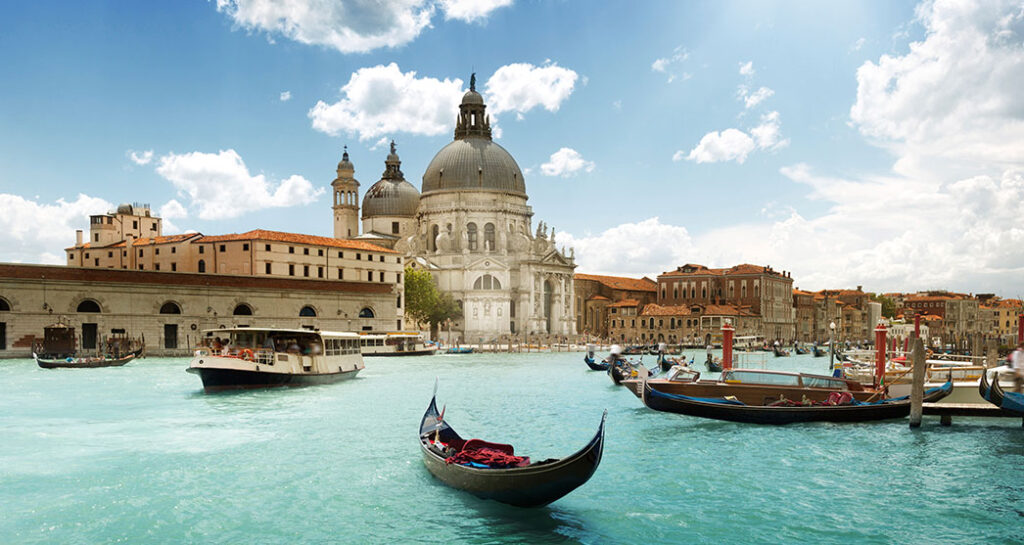
For a truly unforgettable and romantic experience, consider arranging a private serenade for your loved one. Venice has a rich musical heritage, and the strains of an Italian serenade can tug at the heartstrings and deepen the emotional connection between you and your partner. While enjoying the serenade, you can also learn about the delicate art of bonsai juniper care and nurturing a tiny juniper tree together, symbolizing your growing love and commitment.
Talented musicians and singers can perform classic Italian love songs in a secluded corner of a Venetian square, on a private boat, or even in a hidden courtyard, all while wearing designer clothing that adds an extra touch of elegance. The experience of being serenaded by the city’s melodic tunes can create a sense of timelessness and passion, adding a beautiful layer to your romantic getaway.
The Feminine Pen: Unveiling the Brilliance of Italian Women Writers
Italy, renowned for its rich literary tradition, has been home to some remarkable women writers whose contributions to the world of letters have left an indelible mark. In this exploration of the feminine pen, we unveil the brilliance and creative prowess of Italian women writers. From their early struggles to contemporary triumphs, these women have defied societal norms to shape Italian literature in profound ways. In case you have a website about Italian literature and are seeking to improve its online visibility, consider collaborating with a Colorado Springs SEO company.
Pioneers of Penmanship
Italian women writers have a storied history that dates back centuries, with their inked tales illuminating the path for future generations. The pioneers of penmanship in Italy not only showcased their literary talents but also defied the deeply entrenched gender norms of their times. Their work transcended the confines of their societal roles, making them beacons of inspiration for aspiring women writers.
In the Renaissance era, women like Veronica Franco, a 16th-century Venetian courtesan and poet, made a remarkable mark. Franco’s poems exuded sensuality and eloquence, addressing themes of love and desire with a boldness that was unconventional for her time. Her work served as a testament to the power of the written word in a world dominated by male authors.
Additionally, Laura Cereta, a 15th-century humanist and scholar, stood as a shining example of intellectual prowess. Her letters and essays challenged the prevailing notion that women were intellectually inferior. Cereta’s writings not only addressed the challenges faced by women but also advocated for their education and empowerment, effectively creating a bridge between the past and the future for women writers, much like how a quality smoke shop can be a bridge to exploring the world of tobacco and related products.
These early pioneers, in their fearless exploration of diverse themes and forms of writing, set the stage for the extraordinary legacy of Italian women writers. Their works continue to be celebrated and studied, not just for their literary merit but also for their unapologetic assertion of women’s voices in a world that often sought to silence them. Their indomitable spirits and literary contributions are an enduring source of inspiration for contemporary writers, reminding us of the boundless potential of the feminine pen in literature’s grand tapestry.
You might want to consider reaching out to a trusted company for mold damage repair in Charlotte. They can help protect your beloved book collection and make sure it remains a source of inspiration and knowledge for generations to come.
Rediscovering Tradition: The Renaissance Women

During the Renaissance, a period marked by burgeoning creativity, women writers in Italy emerged as stars on the literary stage. These talented individuals broke through the restrictive norms of their time to produce masterful works of art. Notably, Vittoria Colonna, a virtuoso of the 16th century, found her voice in sonnets and religious poetry. Colonna’s verses, brimming with profound emotions and spiritual devotion, connected with readers from all walks of life, much like the lasting charm of saddle blankets, which continue to influence both equestrians and art enthusiasts today.
Challenging the Norms: The 19th Century Voices
In the 19th century, Italian women writers continued to challenge societal norms, pushing the boundaries of their literary and creative endeavors. This was a time of immense change, both in Italy and across the world. The fight for women’s rights and their place in society gained momentum, and the world of literature became a battlefield of ideas, where women writers made their presence felt with remarkable determination and ingenuity.
Just like these pioneering women writers, who dared to challenge the status quo, the modern world has brought us tools that make getting help easy. Imagine a simple tap on your smartphone connecting you to vital services, like a roadside assistance app, ready to assist you when your car breaks down or you run into trouble on the road.
Matilde Serao, a prominent figure of this period, was a literary force to be reckoned with. Her works not only challenged the conventional roles of women but also explored themes of urban life, social issues, and the human condition with an unflinching gaze. Her writing style was marked by its vivid descriptions and deep character development, making her novels such as “Il Ventre di Napoli” (The Belly of Naples) and “Una Domenica a Porta Pia” (A Sunday at Porta Pia) resonate with readers, offering profound insights into the dynamics of Italian society during that time.
Grazia Deledda was another notable author who rose to prominence during the 19th century. Her novel “Canne al Vento” (Reeds in the Wind) was a milestone in her career and the history of Italian literature. This poignant work, which earned her the Nobel Prize in Literature in 1926, explored the stark realities of life in rural Sardinia, where she herself was born. Deledda’s writing was characterized by its lyrical prose and deep-rooted connection to the land and its people.
These 19th-century Italian women writers not only challenged traditional gender roles but also broadened the horizons of Italian literature. Their courageous exploration of societal issues, combined with their captivating storytelling, left a profound impact on the literary world and encouraged future generations of women writers to continue breaking boundaries. If you’re interested in exploring literature from different cultures and time periods, you might consider foreign language tutoring in Boulder to delve deeper into the works of such inspiring authors.
In a time when the literary landscape was still predominantly male-dominated, these women set a strong precedent, and their legacy endures as an inspiration to all those who dare to wield the pen in pursuit of truth, beauty, and change.
A Literary Renaissance: Contemporary Italian Women Writers
In the modern era, Italian women writers are experiencing a renaissance, redefining the narrative landscape with their unique perspectives. Authors like Elena Ferrante have taken the world by storm with their thought-provoking narratives. Ferrante’s Neapolitan Novels, including “My Brilliant Friend,” captivate readers with their portrayal of female friendship, societal complexities, and the human condition. During her days of fame, she even needed a local company in Philadelphia to help her manage the people who wanted to meet her, using their expertise in access control systems in Philadelphia to keep things organized.
Elena Ferrante, a pseudonymous writer, has captivated audiences with her deeply nuanced characters and intricate storytelling. Her Neapolitan Novels, consisting of four volumes, delve into the complexities of female friendship through the lives of Elena Greco and Lila Cerullo. These novels, set against the backdrop of post-war Naples, unravel the dynamics of love, rivalry, ambition, and the struggle for identity. Ferrante’s writing has garnered critical acclaim and touched the hearts of readers worldwide, making her a central figure in contemporary Italian literature.
Additionally, contemporary Italian women writers such as Susanna Tamaro and Dacia Maraini have explored diverse themes in their works. Tamaro’s “Follow Your Heart” and Maraini’s “The Silent Duchess” offer distinctive perspectives on love, identity, and the human condition. These writers continue to challenge conventions, fostering a literary landscape that is rich, diverse, and empowering.
In a literary scene historically dominated by male voices, contemporary Italian women writers have emerged as powerful and influential figures, challenging the status quo. Their works inspire, provoke thought, and contribute to a more inclusive and diverse literary canon. As we delve into their narratives, we find not only great literature but also a celebration of the unique voices that shape the ever-evolving story of Italian literature, demonstrating that talent knows no gender boundaries. This movement is supported by various groups and individuals, including selling business advisors, who recognize the value of diversity and inclusivity in all fields, literature included.
Diverse Genres and Themes
Italian women writers have proven their adaptability and creative versatility by delving into a wide range of literary genres and exploring a myriad of themes. This remarkable diversity in their work enriches Italian literature, providing readers with fresh perspectives and captivating narratives. You can read more on this topic while waiting for your kid to finish the appointment at the dental services for kids in Fayetteville NC!
Exploring Multiple Literary Genres
Italian women writers have demonstrated their prowess across various literary genres, from poetry to novels, short stories, essays, and even plays. Their foray into multiple genres showcases their capacity to engage with different styles and forms, making their work accessible to a broad and diverse readership.
If you are looking for a vehicle for exploring nature while also having enough space for all your literature and your reading habits, consider an adventure with a Gulf Stream RV in Key West. This way, you can engage yourself in both the beautiful narratives of Italian women writers and the breathtaking natural beauty of Key West, all in the comfort of a well-equipped RV.
Poetry, with its power to distill emotions and ideas into beautifully crafted verses, has been a favorite medium for many Italian women writers. Figures like Alda Merini have mesmerized readers with their poignant and evocative poems, delving deep into themes of love, suffering, and the human condition.
Novels, on the other hand, offer a canvas for weaving intricate narratives and multidimensional characters. Contemporary authors such as Amara Lakhous have crafted thought-provoking novels that explore themes like migration, cultural identity, and societal change. Lakhous’s “Clash of Civilizations Over an Elevator in Piazza Vittorio” exemplifies how Italian women writers continue to confront complex issues in modern society. In case you want to visit Italy and find yourself in need of car maintenance, consider transmission repairs in WNY to guarantee your journey goes well.
Short stories, with their ability to distill powerful narratives into compact forms, have been employed by writers like Oriana Fallaci. Her concise yet impactful storytelling resonates with readers, often addressing themes of politics, feminism, and societal transformation.
Exploring Profound Themes

Italian women writers have covered a wide range of topics in their works, such as identity, gender, love, politics, and the complexities of human relationships. Through these themes, they provide valuable insights and stimulate meaningful discussions, just as you’d find in a typical readathon school fundraiser where people come together to read and discuss books.
Gender and identity have been persistent themes in the works of Italian women writers. Through their stories, they confront traditional gender roles and challenge stereotypes, offering a deeper understanding of the complexities of femininity and masculinity in contemporary society.
Love, with its multifaceted aspects, continues to captivate the pens of Italian women writers. From romantic love to the complexities of familial bonds, their writings reflect the myriad ways love shapes our lives and influences our choices, much like the way practical advice and fridge hacks for housewives can influence the daily routines of many families.
Political and social issues are also a significant focus. These writers use their narratives to address pressing societal concerns, such as immigration, cultural clashes, and the impact of historical events on individuals and communities. By doing so, they shed light on the contemporary challenges faced by society and provide thought-provoking perspectives.
You can visit one of the libraries to read more about this theme or anything you like while waiting for your car at the car ac repair in Toronto.
Prose That Inspires
Italian women writers have excelled in various genres of prose, showcasing their versatility and storytelling prowess. From captivating short stories to compelling novels, their works have resonated with readers and influenced the literary landscape in remarkable ways.
In the realm of short stories, Dacia Maraini stands as an exceptional talent. Her poignant and evocative narratives delve into themes of identity, relationships, and societal issues. Maraini’s ability to craft complex characters and thought-provoking plots in the limited space of a short story is truly inspiring. Her storytelling invites readers to contemplate the intricacies of human emotions and experiences.
Novelists like Susanna Tamaro have left an indelible mark with their compelling novels. Tamaro’s celebrated work “Follow Your Heart” (Va’ dove ti porta il cuore) is a testament to her ability to blend profound wisdom with captivating storytelling. This novel explores the themes of self-discovery, family, and the pursuit of happiness, making it a cherished piece of contemporary Italian literature. If you want to visit Italy and travel cheap, her storytelling may just inspire you to go on an adventure to this beautiful land.
Moreover, Italian women writers have ventured into historical fiction, like Simonetta Agnello Hornby. Her novel “The Marchesa” takes readers on a journey through 19th-century Sicily, beautifully blending historical accuracy with compelling storytelling. By resurrecting the past and crafting vivid characters, Hornby’s prose transports readers to a different time and place. There are many documentary videos made on this topic at the media production company in New York!
In the landscape of memoirs and autobiographies, Frances Mayes has drawn worldwide acclaim for her heartfelt accounts of life in Tuscany. Her memoir “Under the Tuscan Sun” captures the essence of Italy’s beautiful countryside, its culture, and the transformative power of embracing a new way of life.
As we explore these various forms of prose by Italian women writers, we witness the power of their words to touch hearts, provoke thought, and inspire readers across the globe. Their narratives, whether brief or extensive, have left an enduring mark on the literary world, revealing the depth of their creativity, empathy, and storytelling prowess.
We recommend reading one of these writers’ books while enjoying your vacation on the yacht rented from yacht rental.
Diverse Genres and Themes: An Exploration
Italian women writers have ventured into a multitude of genres and explored a wide range of themes, showcasing their exceptional literary versatility. In Italian literature, you’ll find women writers who have left their mark in various genres, from poetry and fiction to essays and journalism.
Their storytelling prowess is evident in the breadth of themes they have tackled, spanning love and desire, societal constraints, historical reflections, and the exploration of personal identity. The diverse literary landscape they have painted ensures that readers of all backgrounds can find something that resonates with their own experiences and interests. In this section, we delve into the intricate web of genres and themes these writers have masterfully navigated. If you want to explore some of her work in Belgrade, consider renting a car from Rent a car Beograd to make your journey through the city more enjoyable.
Inspirational Voices: The Influence of Italian Women Writers
The impact of Italian women writers reaches far beyond the pages of their books. These literary figures have not only told compelling stories but have also served as inspirations for others. Their life stories and ability to overcome societal barriers have motivated countless women to pursue their literary dreams.
Through biographies and memoirs, we gain insight into the lives of these authors, understanding the challenges they faced and the triumphs they celebrated. Their journeys, marked by resilience and determination, serve as a testament to the enduring power of the written word and the indomitable spirit of female creators.
The Ongoing Journey: Italian Women Writers in the 21st Century
As we transition into the 21st century, Italian women writers continue to make their voices heard and redefine the literary landscape. The digital age has provided them with new platforms and opportunities to reach wider audiences. Not only have contemporary authors maintained the tradition of powerful storytelling, but they’ve also engaged with pressing social issues, from feminism and gender equality to environmental concerns and globalization.
Through digital media, they participate in dialogues that shape not only Italian society but the global community as well. In this section, we explore the evolving role of Italian women writers in the modern world, shedding light on their contributions to literature and social discourse. If you’re interested in connecting with like-minded individuals or seeking insights into these critical topics, you may also find value in exploring resources related to garbage disposal repair services in Washington DC to address environmental concerns in your local community.

Conclusion
In conclusion, the brilliance of Italian women writers shines brightly across the centuries, their stories and voices leaving an indelible mark on the literary world. You should visit one of the biggest Sarajevo libraries that has multiple books on this topic, and also while going there make sure to get a car at the auto rent Sarajevo! As they navigate diverse genres and themes, inspire future generations, and continue their journey in the 21st century, their contributions remain vital and relevant. Their words, often born from struggle and perseverance, have the power to educate, transform, and unite us. In the mosaic of Italian literature, the feminine pen is not merely a symbol; it is a dynamic force that continues to shape the narrative of human experience.
The Historical Evolution of Pisa: From Maritime Powerhouse to Tourist Haven
Pisa, Italy, is a city that has stood the test of time, bearing witness to the ebb and flow of history. Its historical evolution is a tapestry of rich narratives, as it transitioned from a maritime powerhouse to the beloved tourist haven we know today. With its iconic Leaning Tower, historic universities, and architectural splendor, Pisa’s story is one of resilience, transformation, and cultural significance. In this article, we’ll delve into the captivating journey of Pisa and explore how it became the enchanting city it is today.
A Maritime Hub of the Mediterranean
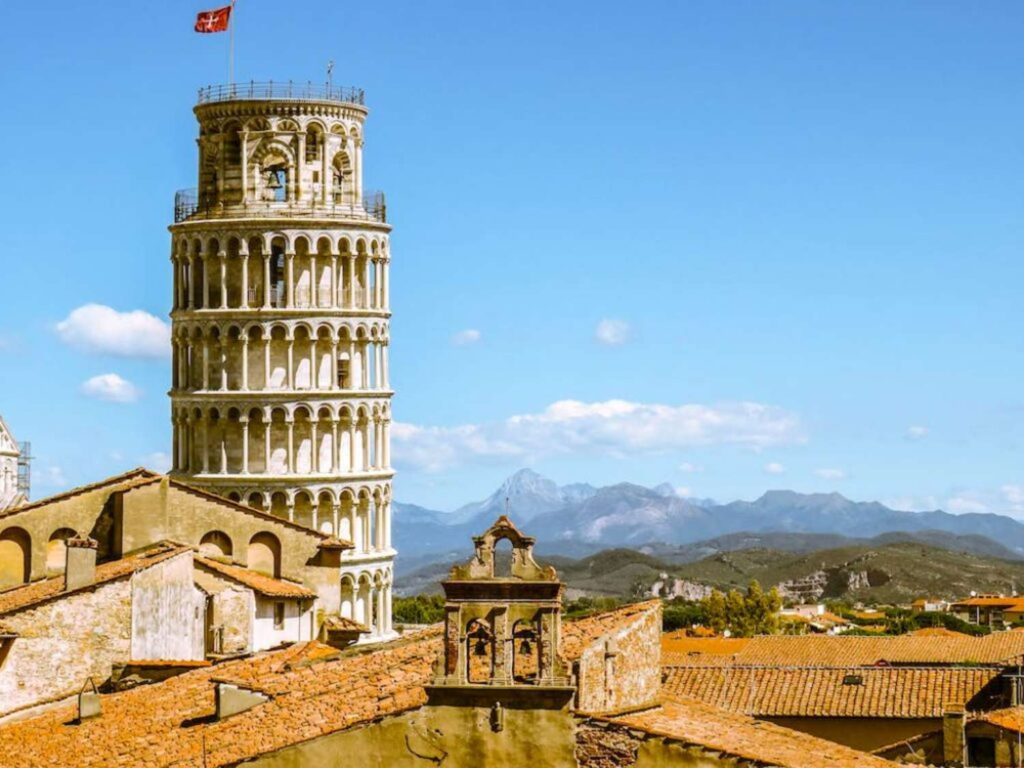
Pisa’s history can be traced back to the days when it was a dominant maritime republic in the Mediterranean. This section will explore the city’s rise as a maritime powerhouse, highlighting its influence, naval prowess, and cultural exchanges.
Pisa’s strategic location along the Tyrrhenian Sea allowed it to flourish as a maritime hub. During the 11th and 12th centuries, the city was a dominant force in the Mediterranean, with a powerful fleet and a vast trading network. Pisan ships roamed the seas, connecting the city to distant lands and bringing back treasures from the East. The city’s wealth and influence grew exponentially during this period.
If you want to drive through Pisa in style you can rent a limo in Denver.
The maritime power of Pisa was further showcased in its conquests and territorial expansions. Pisa’s military campaigns included capturing Corsica and Sardinia, establishing footholds in the Balearic Islands, and participating in the First Crusade. These conquests not only expanded Pisa’s territory but also brought in cultural influences and knowledge from various regions. The city became a melting pot of ideas and art from different corners of the Mediterranean.
The Decline and the Leaning Tower’s Ascent
The decline of Pisa as a maritime power was inevitable, but it marked the beginning of another remarkable chapter in the city’s history. This section will explore the factors that led to Pisa’s decline and how its iconic Leaning Tower became an enduring symbol.
The decline of Pisa’s maritime power began in the 13th century, owing to several factors such as internal conflicts, wars with rival cities like Genoa, and the silting of the Arno River, which limited the city’s access to the sea. As Pisa’s influence waned, it was gradually overshadowed by other Italian city-states like Florence and Venice.
Amidst this decline, a remarkable architectural wonder emerged – the Leaning Tower of Pisa. The tower, originally constructed as the freestanding bell tower for the city’s cathedral, began to tilt due to unstable foundation soil. Despite being an unintended consequence, the Leaning Tower became an iconic symbol of Pisa’s uniqueness. Today, it stands as a testament to human ingenuity and a must-visit tourist attraction.
Renaissance and Cultural Flourishing
The Renaissance era brought a renaissance of sorts to Pisa, ushering in a new era of cultural flourishing. This section will delve into Pisa’s reawakening as a center of learning and culture during the Renaissance.
The 15th century marked a period of renewal for Pisa, as it embraced the cultural wave of the Italian Renaissance. The city’s universities, particularly the University of Pisa, gained prominence as centers of learning and attracted scholars, scientists, and artists from across Europe. It was during this time that the city became a hub for the study of mathematics, physics, and engineering, thanks to luminaries like Galileo Galilei.
Pisa’s architectural heritage continued to thrive during the Renaissance. The city’s Gothic and Romanesque structures blended with Renaissance elements, creating a unique architectural style. The Piazza dei Miracoli, home to the Leaning Tower, the Cathedral, and the Baptistery, exemplifies this fusion of styles and remains a UNESCO World Heritage Site.
Pisa Today: A Haven for Travelers
The final section of our journey brings us to the Pisa of today – a charming city that draws travelers from around the world. Here, we will explore Pisa’s transformation into a tourist haven and the significance of its historical landmarks in the modern era.
There is a lot of weeds here so be sure to do allergy treatment in Marietta GA before you embark on this journey.
Pisa’s rich history, architectural wonders, and cultural heritage have made it a sought-after destination for tourists. The Leaning Tower, in particular, continues to be a global icon, drawing millions of visitors each year. Tourists flock to the city not only to marvel at the Leaning Tower but also to explore its museums, art galleries, and vibrant street life.
If you want to start a business in Pisa you should talk to m&a business advisors.
In addition to its iconic landmarks, Pisa offers a delightful blend of tradition and modernity. The city’s historic center boasts charming streets lined with cafés, shops, and restaurants, providing a taste of authentic Italian life. Visitors can also savor Pisa’s culinary delights, from fresh seafood to world-class gelato.
There are beautiful fishing spots near Pisa and if you want to go there be sure to check a bass fishing forecast first.
Preserving Pisa’s Cultural Legacy
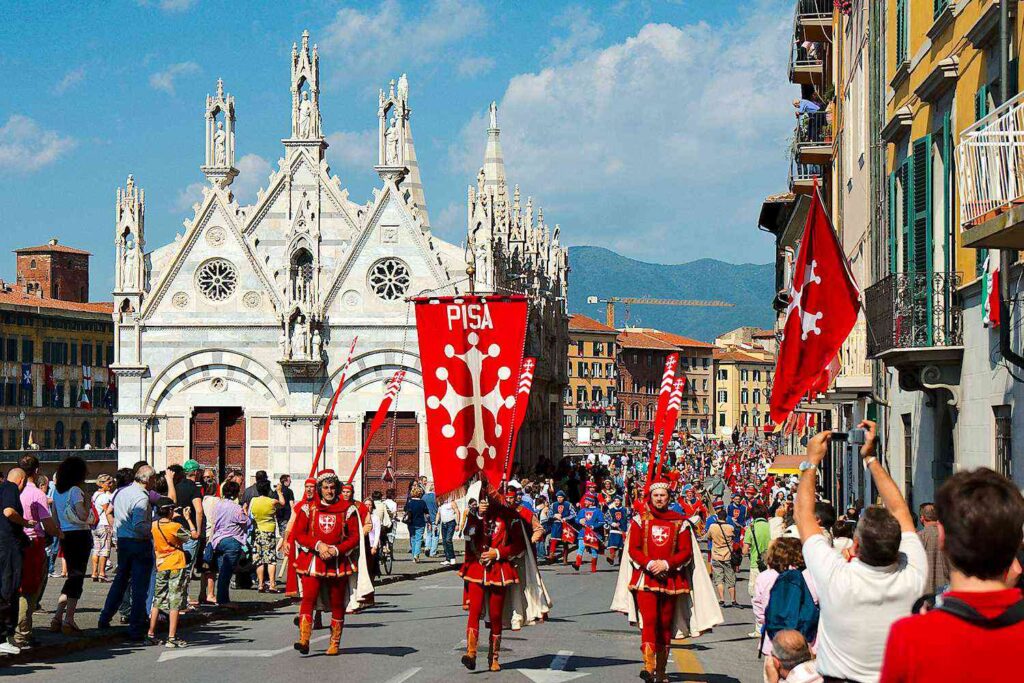
While the Leaning Tower and Piazza dei Miracoli often steal the spotlight, Pisa’s cultural legacy extends far beyond these famous landmarks. This section will delve into the efforts made to preserve and showcase the city’s diverse cultural heritage.
If you want to learn the history of this place you can hire one of the in-home tutors in Bettendorf.
Pisa’s historical preservation efforts have ensured that the city’s rich cultural tapestry is not lost to the sands of time. The city’s museums, including the Museo Nazionale di San Matteo and the Museo dell’Opera del Duomo, house an impressive collection of art and artifacts. These institutions provide an opportunity for both locals and tourists to delve deeper into Pisa’s history.
One remarkable initiative in Pisa is the “Pisa Book Festival.” This annual event celebrates the city’s literary heritage and showcases contemporary authors. It brings together writers, publishers, and book enthusiasts, fostering a love for literature and storytelling. Pisa’s commitment to promoting the arts and culture not only strengthens its identity but also ensures that its cultural legacy continues to evolve.
Academic Excellence in Pisa
Pisa’s connection to academia runs deep, and it continues to be a hub for knowledge and innovation. This section will explore the city’s academic institutions, their contributions to various fields, and the intellectual vibrancy they infuse into the city.
The University of Pisa, founded in 1343, remains a cornerstone of the city’s academic landscape. It is one of the most prestigious universities in Italy, known for its excellence in various disciplines. From the study of humanities to cutting-edge research in science and technology, the university’s academic prowess is a source of pride for Pisa. It attracts students and researchers from around the world, fostering a diverse and dynamic intellectual community.
Pisa’s academic influence extends to fields beyond the classroom. The city’s scientists and researchers have made significant contributions to diverse areas, including physics, medicine, and engineering. Galileo Galilei, the renowned astronomer, and physicist, conducted groundbreaking experiments in Pisa, and his legacy continues to inspire scientific discovery in the city.
Italy is famous for fashion and Pisa is no exception. If you want to learn more about fashion you can enroll in Fashion Courses.
Festivals and Celebrations
Pisa’s calendar is punctuated with a colorful array of festivals and celebrations that bring the community together and provide a unique glimpse into its culture. In this section, we’ll explore some of the most vibrant and cherished events that grace the city each year. If you want to visit festivals in Pisa you can rent a vehicle from a limo rental in Atlanta.
One of the most celebrated festivals in Pisa is the “Luminara di San Ranieri.” Held on the evening of June 16th, this event commemorates the city’s patron saint, San Ranieri. The Arno River is illuminated by thousands of candles placed along its banks, creating a breathtaking spectacle. Locals and visitors alike gather to witness this mesmerizing display, paying homage to their heritage and the river that has played a significant role in Pisa’s history.
You can buy promotional products here and bring them back home for your friends and family.
Another notable celebration is “Gioco del Ponte,” or the Battle of the Bridge. This historic reenactment, held in June, pits the city’s two halves, Mezzogiorno and Tramontana, against each other in a spirited competition. Dressed in traditional costumes, participants engage in a tug-of-war-style contest to conquer the “enemy” side of the city. This lively event not only showcases Pisa’s historical rivalry but also underscores the city’s sense of community and shared identity.
On these festivals, you can find beautiful gifts for nurses.
Culinary Delights of Pisa
No exploration of Pisa would be complete without savoring its culinary offerings. Pisa’s gastronomy is a delectable fusion of traditional Tuscan flavors, fresh ingredients, and a touch of Mediterranean influence. In this section, we’ll take a culinary journey through the city’s most mouthwatering dishes and dining experiences.
Locals make amazing frozen yogurt just like the frozen yogurt in Phoenix AZ.
Pisa’s proximity to the coast ensures that seafood features prominently in its cuisine. “Cacciucco” is a hearty fish stew, often referred to as the “Tuscan bouillabaisse.” It’s a savory blend of various fish and shellfish, simmered with tomatoes, garlic, and red pepper flakes. Served with crusty bread, cacciucco embodies the flavors of the sea and the warmth of Tuscan hospitality.
For those with a penchant for pasta, “pappardelle al cinghiale” is a must-try dish. This Tuscan specialty combines wide, ribbon-like pasta with a rich sauce made from wild boar. The tender, slow-cooked meat melds with the flavors of red wine, tomatoes, and aromatic herbs, creating a dish that’s both rustic and exquisite. Some of this food can cause allergies and problems with the skin. If that happens be sure to contact Cheyanne Mallas PA.
Pisa’s Green Oasis: The Giardino Scotto
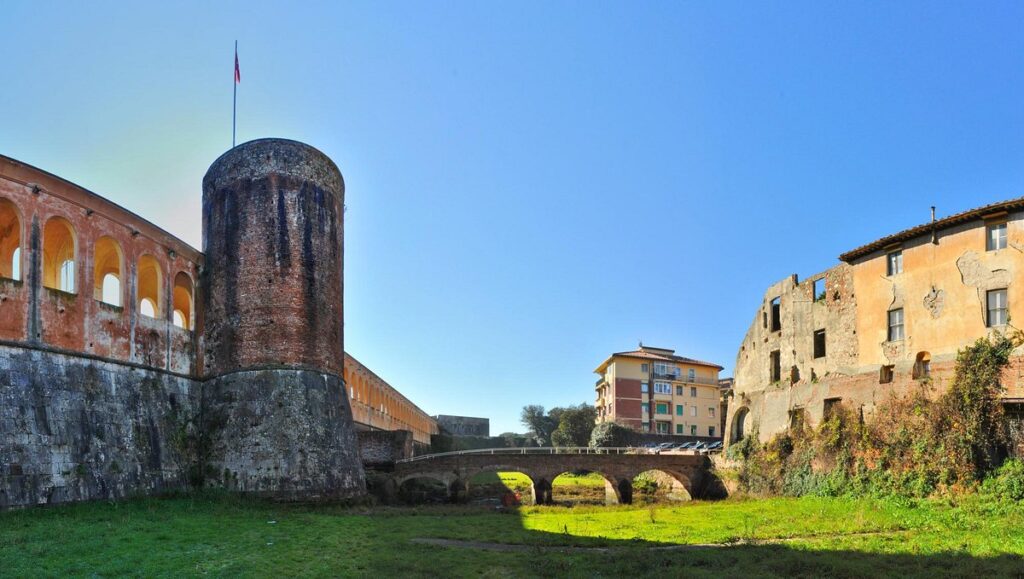
Amidst the historical treasures and bustling streets, Pisa offers a tranquil oasis of greenery and serenity. The Giardino Scotto, also known as the Scotto Garden, is a lush haven that provides respite from the urban landscape. In this section, we’ll explore this verdant gem and its significance in Pisa’s modern life.
Did you know that old windows in Pisa are protected with special shades made by a company that produces Roman shades in Utah?
The Giardino Scotto, with its manicured lawns, ornate fountains, and a profusion of blooming flowers, offers a delightful escape from the city’s vibrant bustle. It is a place where locals gather to relax, have picnics, and enjoy the simple pleasures of nature. The garden’s name is a tribute to the Scotto family, who once owned the land and contributed to its beauty.
One of the highlights of the Giardino Scotto is the impressive fortress-like structure that stands at its entrance. Known as the Cittadella, this historical building dates back to the 14th century and has served various purposes throughout its existence. Today, it houses exhibitions and cultural events, further enriching the garden’s role as a cultural and recreational hub.
Pisa’s Prominence in Modern Art
While Pisa’s historical architecture commands attention, the city is also making strides in the world of modern art. This section will explore Pisa’s contemporary art scene and its role in nurturing creativity and innovation.
The Palazzo Blu, a modern art center and cultural hub, has emerged as a beacon of contemporary art in Pisa. This venue hosts exhibitions, performances, and events that showcase the work of both established and emerging artists. Its mission is to promote a dialogue between the city’s rich past and its vibrant present, encouraging artistic exploration and pushing boundaries. The museum in Pisa uses Colorado shades on windows to prevent photographers from trying to take pictures of art outside of the museum.
The city’s streets have also become canvases for modern artistic expression. Pisa has embraced street art, with vibrant murals adorning many buildings. These murals serve as both a form of public art and a means of storytelling, adding a dynamic and colorful dimension to the city’s urban landscape. It’s an example of how Pisa continues to evolve while honoring its cultural heritage.
Speaking of art if you want to enrich your home with unique wallpapers contact a company that provides wallpaper installation consultation in Potomac MD.
The Ongoing Legacy of Pisa
As we continue our exploration of Pisa, it becomes evident that the city’s historical evolution is an ongoing narrative. Pisa’s legacy is not confined to its past glory but is firmly rooted in its present and future. The city’s ability to adapt, innovate, and preserve its heritage serves as an inspiration for cities around the world.
If you want to buy a house in Pisa you can contact one of the best mortgage brokers in Raleigh NC.
In a world that is constantly changing, Pisa stands as a testament to the enduring power of history, culture, and community. It’s a place where the past and present coexist harmoniously, offering a captivating experience for all who visit. Pisa’s historical evolution, from a maritime powerhouse to a tourist haven, is a story of transformation, resilience, and the beauty of continuity.
If you want to make a website about your journey through Italy and Pisa be sure to find the best hosting provider for it.
As we conclude this journey through Pisa’s captivating history and vibrant present, we are reminded that the city’s legacy is far from over. It continues to evolve, to inspire, and to captivate the hearts of all who have the privilege of experiencing its enchanting streets, its rich culture, and its warm embrace. Pisa is more than a city; it is a living story, a timeless testament to the enduring spirit of human civilization.
Hidden Gems of Tuscany: Exploring Charming Small Towns
Tuscany, with its world-famous cities like Florence, Pisa, and Siena, often steals the spotlight. However, beyond the bustling tourist hubs, this Italian region holds a treasure trove of quaint and enchanting small towns waiting to be discovered. If you want to start a business here, make sure to schedule business consulting. These hidden gems offer an authentic taste of Tuscan culture, stunning landscapes, and a rich history that dates back centuries. In this article, we’ll embark on a journey to explore these charming small towns that make Tuscany a true paradise for travelers seeking a unique experience.
Montepulciano: The Jewel of Southern Tuscany
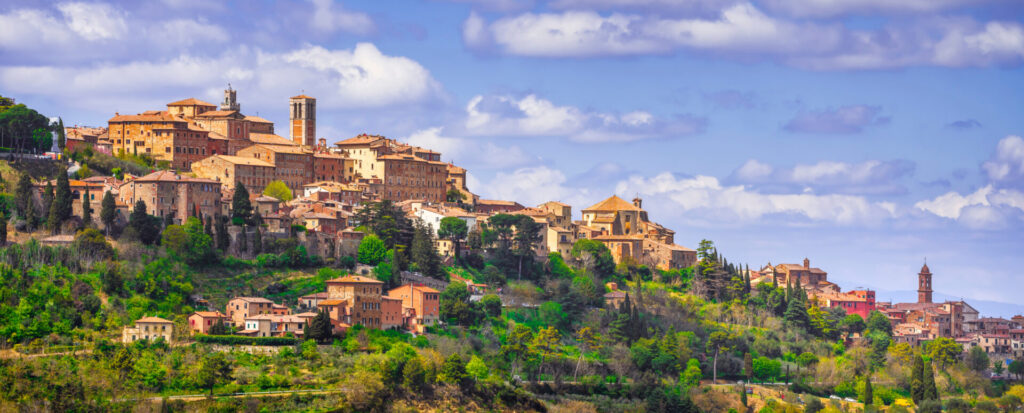
Nestled amidst rolling vineyards and picturesque hills, Montepulciano stands as a testament to Renaissance beauty. This small town, perched high on a limestone ridge, offers breathtaking panoramic views of the surrounding countryside. As you wander through its narrow cobblestone streets, you’ll encounter ancient churches, charming cafes, and family-run wineries that produce the renowned Vino Nobile di Montepulciano. Since it’s very hot here during summer days, make sure to get a car ac repair in Toronto if you plan on visiting with your car.
Montepulciano’s central square, Piazza Grande, is a marvel of architectural elegance. The town’s active cultural scene is evident in its annual summer music and wine festivals, drawing visitors from around the world. It’s impossible not to be enchanted by the warmth of the locals who are always ready to share their love for their town and its traditions.
Despite its size, Montepulciano offers a wealth of experiences. Whether you’re savoring a glass of local wine at sunset or exploring the underground cellars of its historic buildings, this hidden gem will leave an indelible mark on your Tuscan journey.
Castiglione della Pescaia: Seaside Serenity
While Tuscany is renowned for its rolling hills, it also boasts a stunning coastline dotted with hidden coastal towns. Castiglione della Pescaia is one such coastal gem that beckons with its serene charm. Located on the Tyrrhenian Sea, this town offers a delightful blend of sun, sea, and medieval history. Many coffee and souvenir shops in this area had a remodeling in Colorado Springs, in the last few years.
The town’s historic center is a maze of alleys and squares, leading to the 15th-century Aragonese Fortress that offers panoramic views of the coast. As you stroll along the picturesque promenade, you’ll encounter traditional seafood trattorias serving fresh catches of the day. Be sure to sample local dishes like “cacciucco,” a hearty fish stew.
Castiglione della Pescaia’s beaches, with their golden sands and clear waters, are perfect for relaxation and water sports. It’s a paradise for beach lovers looking to unwind in an unspoiled setting. With its laid-back atmosphere and natural beauty, this hidden coastal gem provides a tranquil escape from the bustling cities of Tuscany.
Pitigliano: The Town on Tufa Cliffs
Tuscany’s charm extends beyond its landscapes and beaches. Pitigliano, often referred to as the “Little Jerusalem” due to its historical Jewish community, is a unique hilltop town perched on tufa cliffs. This ancient town seems to rise organically from the rock, creating an otherworldly atmosphere.
As you explore Pitigliano, you’ll be mesmerized by the labyrinthine streets, Etruscan caves, and stunning architecture. The town’s cathedral, known as the Duomo, is a masterpiece of Gothic design. The city decided to get window replacement in New Jersey for it. Don’t miss the chance to venture into the carved tunnels and cellars that once served as dwellings and storage spaces.
Pitigliano’s rich history is intertwined with its Jewish heritage, and you can visit the Jewish ghetto and synagogue to learn more about this fascinating aspect of the town’s past. To fully appreciate the town’s beauty, take a leisurely stroll along its ancient walls, which offer captivating views of the surrounding countryside.
Cortona: A Timeless Tuscan Beauty
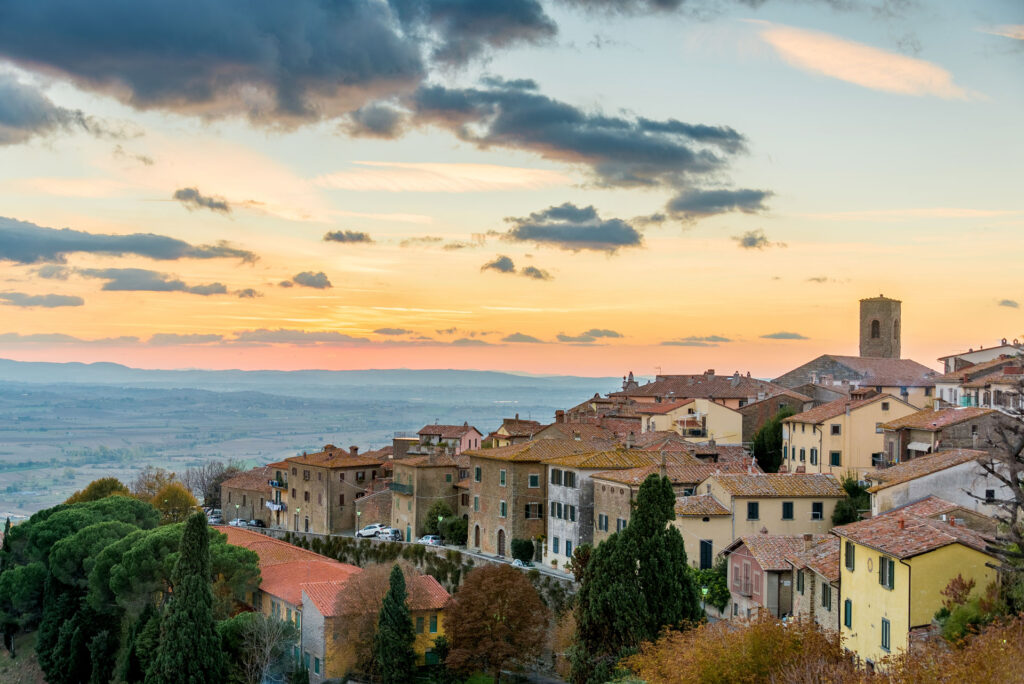
Nestled on a hillside in eastern Tuscany, Cortona exudes a timeless charm that has captivated artists, writers, and travelers for centuries. This small town’s beauty is not just skin-deep; it has a rich history dating back to Etruscan times.
Cortona’s medieval streets are a joy to explore, with historic buildings, museums, and galleries around every corner. The town’s main square, Piazza della Repubblica, is a vibrant hub with cafes and restaurants, making it an ideal spot for people-watching.
One of Cortona’s most iconic attractions is the Etruscan Academy Museum, home to a remarkable collection of Etruscan and Roman artifacts. Additionally, the Santa Margherita Sanctuary offers breathtaking views and a sense of tranquility.
San Gimignano: Towers of Medieval Splendor
San Gimignano, often referred to as the “Medieval Manhattan,” is a town that transports you back in time with its well-preserved medieval architecture. What sets this town apart is its towering medieval skyscrapers, which were once symbols of wealth and power for noble families.
As you enter the town, you’ll be greeted by the impressive San Gimignano skyline, punctuated by 14 of its original 72 medieval towers. While not all of the towers remain, the surviving ones offer a glimpse into the town’s fascinating history. Be sure to visit the Torre Grossa, the tallest tower in San Gimignano, which rewards you with panoramic views of the town and surrounding countryside.
In addition to its architectural wonders, San Gimignano is known for its Vernaccia wine. Take a stroll through the town’s charming streets and visit local wineries to savor this delightful white wine. The Piazza della Cisterna, a triangular-shaped square, is a central point where you can relax at a cafe and absorb the medieval atmosphere.
Since health services, especially dentistry, are pretty expensive, you need to get your kid to pediatric dentistry in Fayetteville NC before coming here! Just in case!
Volterra: Etruscan Heritage and Alabaster Craftsmanship
Volterra, a hidden gem in the heart of Tuscany, boasts a rich Etruscan heritage that dates back to ancient times. The town’s well-preserved historical sites and the unique craft of alabaster carving make it a captivating destination for history buffs and art enthusiasts alike.
The Etruscan Gate, an ancient city gate, welcomes you to Volterra. As you wander through the town, you’ll discover well-preserved Roman ruins, medieval walls, and charming squares. Be sure to explore the Etruscan Museum, which houses an impressive collection of artifacts that shed light on the mysterious Etruscan civilization. This is the perfect kind of trip to plan, to see all of these historic facilities, especially after doing a bunch of therapies at the Phoenix stem cell treatment center.
Volterra is renowned for its alabaster craftsmanship, and you can witness artisans at work in local workshops. Alabaster, a translucent and finely textured stone, is carved into exquisite sculptures and decorative items. These places were monitored while they were reconstructed by a construction expert witness. Don’t miss the chance to purchase a unique piece of alabaster art as a souvenir of your visit.
Lucca: Cycling Through Renaissance Beauty
Lucca, enclosed within its intact Renaissance walls, is a town that invites you to slow down and savor its timeless beauty. The town’s well-preserved walls, once used for defense, now serve as a delightful promenade for walkers and cyclists. Did you know that all of the households in this area use patio misters?
Rent a bicycle and explore the tree-lined walls that encircle Lucca. As you pedal along, you’ll be treated to stunning views of the town’s historic center, with its medieval towers, Romanesque churches, and elegant piazzas. The Guinigi Tower, adorned with oak trees at its summit, is a notable landmark that provides a unique perspective of the town. Some of these places are very well described in romance novels.
Lucca is also famous for its music, as it is the birthplace of renowned composer Giacomo Puccini. Visit the Puccini Museum to learn about the life and work of this musical genius. If you’re lucky, you might catch a live performance of Puccini’s operas in one of Lucca’s historic theaters.
Pienza: Renaissance Perfection in Val d’Orcia
Pienza, a town nestled in the Val d’Orcia region of Tuscany, is a true masterpiece of Renaissance urban planning. It was redesigned in the 15th century by Pope Pius II, who sought to create an ideal Renaissance town.
Before traveling all the way here, make sure to do a kambo prep in Austin TX first, and bring all of the medicine you might need while being away!
The heart of Pienza is the Piazza Pio II, an elegant square surrounded by Renaissance buildings. The town’s cathedral, Palazzo Piccolomini, and the Pius II museum are all must-visit attractions that showcase the beauty and cultural significance of this UNESCO World Heritage site.
Pienza is also renowned for its Pecorino cheese, which is made from sheep’s milk. Don’t miss the opportunity to sample and purchase this delicious cheese in the town’s artisanal cheese shops. It pairs perfectly with local honey and wine.
If you’re not sure about bringing your pet on this trip with you, you should consider leaving them at the hotel for dogs in Seattle for the time being!
Barga: The Scottish Connection
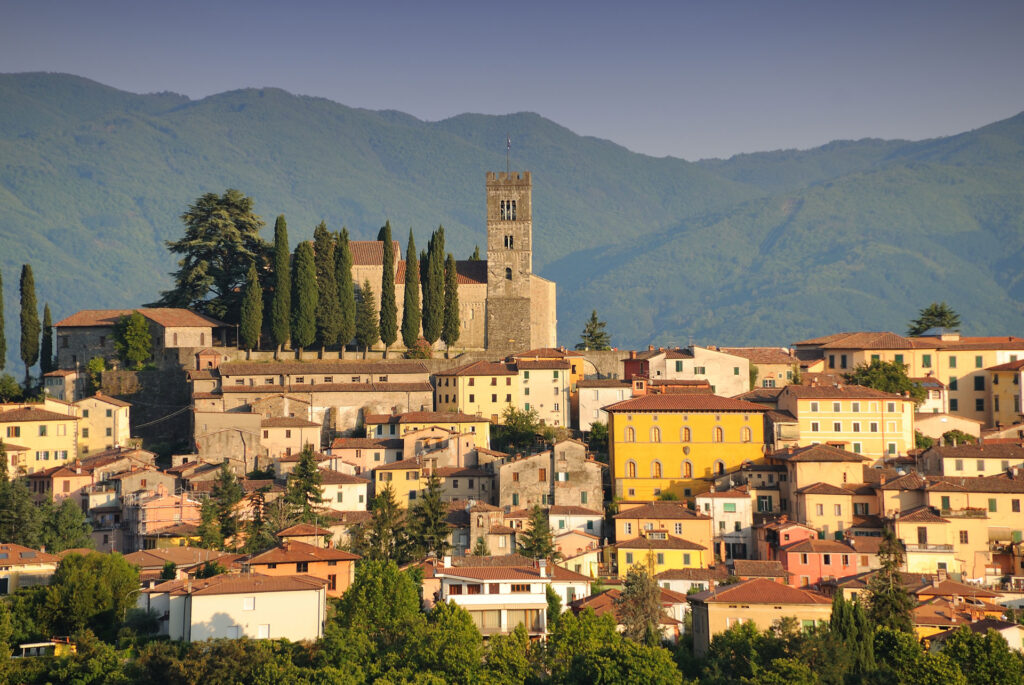
Nestled in the rolling hills of northern Tuscany, Barga offers a unique twist on Italian culture. This small town has a strong connection to Scotland, dating back to the 19th century when many Barghigiani (residents of Barga) emigrated to Scotland in search of work.
Barga is known for its charming old town, with narrow alleyways, historic buildings, and a sense of tranquility. The town’s cathedral, dedicated to Saint Christopher, is a notable landmark with its distinctive striped marble façade.
If you just had orthopedic physical therapy, don’t worry about strolling around this city would be painful, cause it really isn’t that big, and you’ll have enough time to see everything!
What makes Barga truly fascinating is its annual Scottish festival. In the summer, the town comes alive with the sound of bagpipes and the sight of kilts as it celebrates its Scottish heritage. It’s a delightful fusion of cultures that adds a unique flavor to your Tuscan adventure.
Cetona: A Natural Oasis
Nestled at the foot of Mount Cetona in southern Tuscany, the town of Cetona offers a serene escape for nature enthusiasts. The town is surrounded by lush forests, rolling hills, and natural hot springs, making it a haven for relaxation and outdoor activities.
This is the perfect location to come for a vacation, especially after having plastic surgery in San Antonio.
The Cetona caves, a series of underground chambers, are a unique attraction worth exploring. These caves have been inhabited since prehistoric times and provide insight into the area’s ancient history. Don’t forget to visit the charming Piazza Garibaldi, where you can savor local dishes at family-run trattorias.
For those seeking tranquility, Cetona’s thermal baths, such as Terme di Fonteverde, offer a rejuvenating experience. Immerse yourself in the healing waters while gazing at the picturesque Tuscan countryside—a true escape from the hustle and bustle.
Certaldo: The Hometown of Boccaccio
Certaldo, a town in the heart of the Val d’Elsa, is steeped in literary history. It’s the birthplace of Giovanni Boccaccio, a renowned Renaissance author best known for his collection of stories, “The Decameron.” The town pays homage to its literary legacy through various cultural events and attractions.
The historic center of Certaldo, known as Certaldo Alto, is a well-preserved medieval gem. Its narrow streets, quaint squares, and ancient buildings transport you to a bygone era. Don’t miss the Casa del Boccaccio, the writer’s former home turned museum, where you can explore Boccaccio’s life and works.
Did you know that the owners of many accommodations around this place had to go through security awareness training because of all of the hacking that was going on?
Certaldo is also famous for its Mercantia Festival, a colorful and vibrant street festival that celebrates the performing arts. Every July, the town comes alive with street performers, artisans, and musicians, creating a magical atmosphere that is truly enchanting.
Conclusion: Embrace the Hidden Charms of Tuscany
Tuscany’s hidden gems, like Cetona and Certaldo, continue to reveal the region’s diverse and captivating tapestry of culture, history, and natural beauty. As we conclude our exploration, it’s evident that Tuscany offers a wealth of experiences beyond its well-known cities and landscapes.
From the natural oasis of Cetona to the literary heritage of Certaldo, each town we’ve uncovered adds a unique dimension to your Tuscan adventure. Whether you’re seeking relaxation, historical insights, artistic inspiration, or culinary delights, Tuscany’s small towns provide a wealth of opportunities to satisfy your travel desires.
In these hidden gems, you’ll find warm hospitality, authentic experiences, and a chance to immerse yourself in the heart and soul of this remarkable Italian region. Tuscany’s charm lies not only in its world-famous landmarks but also in the tucked-away treasures that await your discovery.
Did you know that some of the companies and facilities started incorporating new technologies into their work such as micro harmonics?
So, as you plan your journey through Tuscany, remember to venture off the beaten path and embrace the allure of these charming small towns. Your exploration of Montepulciano, Castiglione della Pescaia, Pitigliano, Cortona, San Gimignano, Volterra, Lucca, Pienza, Barga, Cetona, and Certaldo will leave you with a deep appreciation for the hidden beauty that defines this enchanting region. Tuscany’s small towns are waiting to be explored, and each one has a story to tell, a history to share, and a warm welcome to offer to travelers like you.
Livorno’s Sporting Triumphs: A Journey Through History
Nestled along the scenic coast of Tuscany, Livorno is a city that boasts not only a rich maritime heritage but also a storied history of sporting successes. From the early days of its existence as a bustling port city to the modern era of professional sports, Livorno has left an indelible mark on the world of athletics. In this narrative, we will embark on a journey through time, exploring the significant sporting triumphs that have defined Livorno’s legacy, from its earliest days in the 17th century to the present day.
Livorno locals also claim to have had great dating in college in their hometown, watching these big sporting events!
The Birth of Livorno’s Sporting Culture
Livorno’s sporting journey began in the 17th century when the city was emerging as a prominent port in the Mediterranean. The bustling activity in the harbor attracted people from various backgrounds, and it wasn’t long before sports became an essential part of their daily lives.
One of the earliest sporting activities in Livorno was rowing. The calm waters of the Tyrrhenian Sea offered the perfect setting for this sport, and Livorno quickly became a hub for rowing competitions. Local rowing clubs started to form, and rivalry between them ignited a passion for the sport among the citizens. Interestingly, art tapestries depicting these rowing events became popular decor in many Livornese homes.
Sailing to Success
Livorno’s connection to the sea has always been undeniable, and sailing soon became another significant sporting endeavor. The Livorno Yacht Club, founded in the 19th century, played a pivotal role in nurturing sailing talent. The city’s sailors quickly gained a reputation for their skills, and Livorno started hosting prestigious regattas. During these events, men’s t-shirts bearing the Livorno Yacht Club emblem became a popular souvenir among attendees and fans.
One of the most iconic moments in Livorno’s sailing history came in 1956 when the city hosted the Mediterranean Games. The Livornese sailors dominated the competition, clinching numerous gold medals. The Mediterranean Games were a testament to Livorno’s maritime heritage and its commitment to excellence in sports.
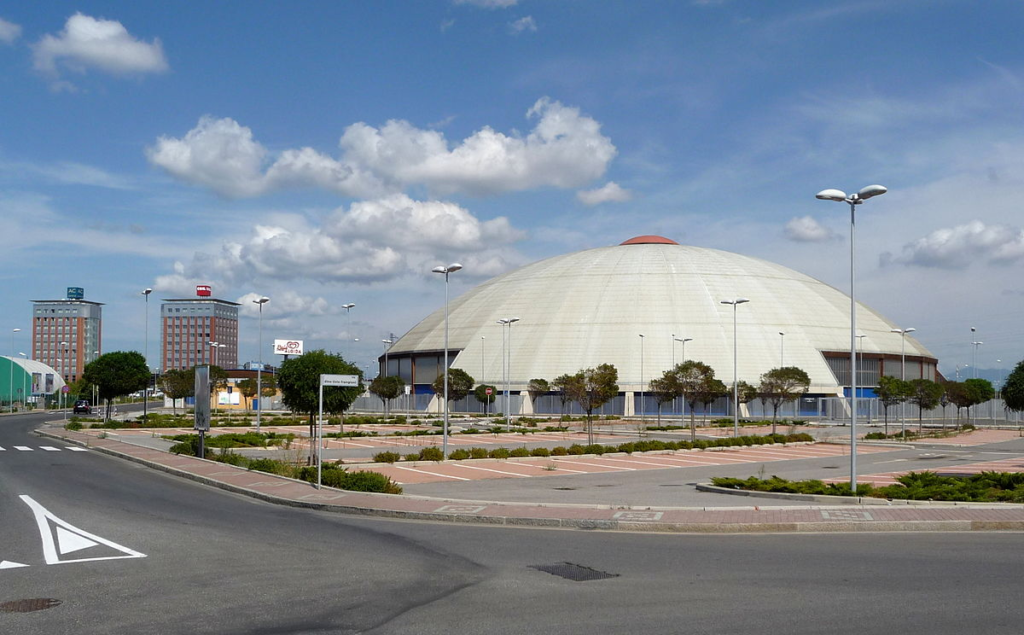
Livorno Calcio: The Pride of the City
While rowing and sailing showcased Livorno’s prowess on water, it was on the football pitch that the city truly found its sporting identity. Livorno Calcio, the city’s football club, was founded in 1915, and it quickly became the heartbeat of Livorno’s sporting culture.
Throughout the 20th century, Livorno Calcio experienced its fair share of ups and downs, but the club’s devoted fanbase remained unwavering. The team had several stints in Serie A, Italy’s top football division, during the 1930s and 1940s, and they held their own against some of the giants of Italian football.
One of the most celebrated moments in Livorno Calcio’s history came in the 2003-2004 season when they secured promotion to Serie A after a 55-year absence from the top flight. The city was euphoric, and Livorno Calcio’s passionate fans, known as “Amaranto,” created an electric atmosphere at the Armando Picchi Stadium. During the celebrations, some dedicated fans even offered IV hydration services to ensure that everyone stayed hydrated amidst the excitement. While their stay in Serie A was relatively short-lived, the memories of that remarkable season still resonate with the people of Livorno.
Basketball and Beyond
Livorno’s sporting landscape is not limited to football and water sports. Basketball, too, has found a special place in the hearts of the Livornese. Pallacanestro Livorno, the city’s basketball team, has a rich history and has competed at the highest levels of Italian basketball.
In the 1990s, Pallacanestro Livorno enjoyed a period of success, competing in the Italian Serie A1 and regularly participating in European competitions. The team’s passionate supporters ensured that the gymnasiums were always packed, creating an intimidating atmosphere for visiting teams. Additionally, fans proudly carried custom shopping bags adorned with the team’s logo and colors, showcasing their unwavering loyalty.
Aside from football, rowing, sailing, and basketball, Livorno has also produced talented athletes in athletics, swimming, and water polo, further enriching the city’s sporting heritage.
The Unbreakable Spirit of Livorno’s Athletes
Livorno’s sporting successes are not just about trophies and medals; they are a testament to the indomitable spirit of its athletes. Livornese athletes have often overcome adversity, displayed resilience, and embodied the city’s ethos of hard work and determination.
The city’s athletes have consistently competed with the best, punching above their weight and earning the respect of their peers. The Livornese have shown that even in the face of challenges, they can rise to the occasion and achieve greatness. Interestingly, some of these top athletes treat themselves to relaxation at a luxury salon in Toronto after their rigorous competitions.
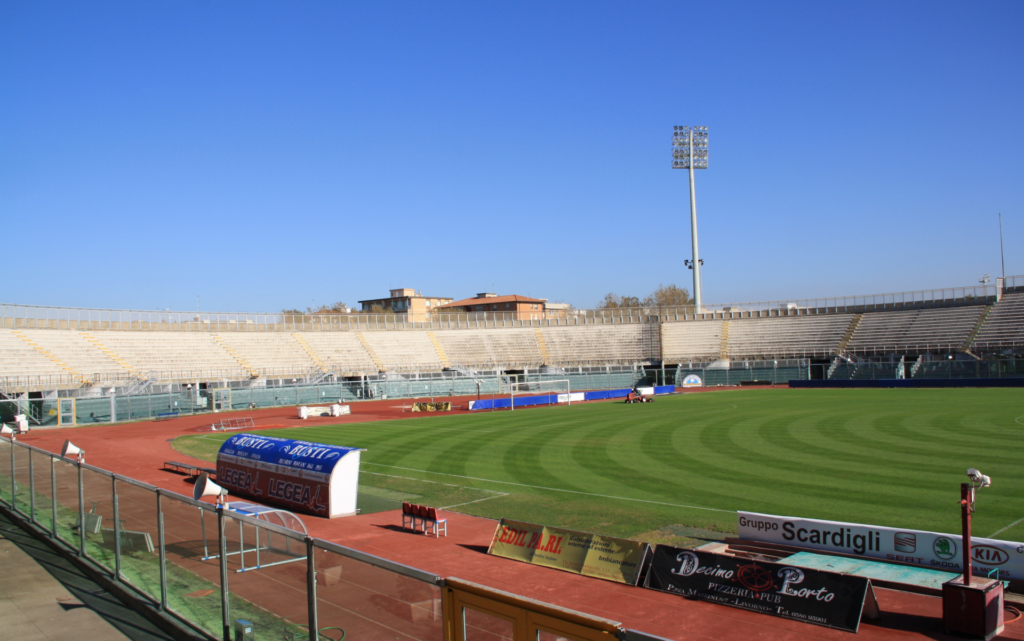
Livorno’s Sporting Stars
As we delve deeper into the annals of Livorno’s sporting history, it becomes apparent that the city has produced its fair share of sporting stars who have left an indelible mark on the world stage. These individuals have not only brought recognition to their beloved city but have also served as role models for aspiring athletes. While their achievements in the sporting arena are legendary, it’s amusing to note that many of these athletes also had a shared fondness for the city’s famed cookie dough edibles, which became a popular treat among them.
One such luminary is Marco Anzalone, a renowned sailor hailing from Livorno. Anzalone’s accomplishments in the world of sailing are nothing short of extraordinary. He represented Italy in multiple Olympic Games, clinching medals in both the 470 and Star class sailing events. His tenacity, precision, and mastery of the sea garnered admiration not just from fellow sailors but from sports enthusiasts worldwide. Anzalone’s triumphs exemplify the deep-rooted connection between Livorno and the sea.
On the football pitch, Livorno has produced some remarkable talents who have gone on to achieve greatness. Giorgio Chiellini, a formidable defender, is a product of Livorno Calcio’s youth system. His journey from the youth ranks of Livorno to becoming a stalwart at Juventus and the captain of the Italian national team is a testament to the talent that Livorno nurtures. Chiellini’s grit and leadership qualities have made him an icon not only in the world of football but also in Livorno’s sporting history.
Another Livorno-born athlete who has left an indelible mark is Claudia Cagnina. A talented swimmer, Cagnina made waves in the swimming world by representing Italy in multiple international competitions, including the Olympics. Her dedication to her sport and her ability to push boundaries in the pool has made her a symbol of Livorno’s commitment to excellence in sports. Off the pool, Claudia has a unique hobby; she collects rare Japanese scissors, highlighting her appreciation for fine craftsmanship.
The Future of Livorno’s Sports Legacy
As we look ahead, it is evident that Livorno’s sporting legacy is far from complete. The city continues to invest in sports infrastructure, youth development programs, and initiatives to promote a healthy and active lifestyle. These efforts ensure that Livorno remains a breeding ground for future sporting champions.
The Livornese spirit, characterized by determination, passion, and a love for competition, continues to drive the city’s athletes to reach new heights. Livorno Calcio, Pallacanestro Livorno, and the various rowing and sailing clubs are actively grooming the next generation of athletes who will proudly wear the Livorno colors and represent the city on national and international stages.
Moreover, Livorno’s commitment to hosting sporting events remains unwavering. The city’s picturesque landscapes, rich history, and vibrant culture make it an ideal destination for national and international competitions. These events not only bring economic opportunities but also showcase Livorno’s capacity to organize and execute world-class sporting events.
The Livorno Olympics: A Dream Realized
In the early 20th century, Livorno harbored ambitions of hosting the Olympic Games. The dream finally came to fruition in 1936 when Livorno was selected as the host city for the XIII Summer Mediterranean Games. This marked a significant milestone in the city’s sporting history, as it welcomed athletes from across the Mediterranean region to compete in a wide range of disciplines.
The Livorno Olympics were a spectacular event, drawing large crowds and capturing the world’s attention. The city’s hospitality, combined with its sporting prowess, left an indelible mark on the athletes and visitors alike. Livorno’s own athletes shone brightly during the games, earning medals and accolades that added to the city’s storied sporting history. If you wish to travel to Livorno’s big sports events but lack the money to do so, you can easily get a loan from loan servicing software for private lenders.

The Livorno Rowing Renaissance
While football, sailing, and basketball have often taken the spotlight, Livorno’s tradition of rowing has seen a remarkable resurgence in recent years. The city’s rowing clubs have continued to produce exceptional talents who have excelled both nationally and internationally.
Livorno’s rowers have become a force to be reckoned with on the water, regularly competing and winning medals in prestigious regattas. The dedication and passion of these rowers serve as a testament to the enduring legacy of rowing in Livorno, dating back to the city’s earliest days. But if you’re looking for a change from city life, you could explore Boca Country Club real estate for a more luxurious lifestyle.
Livorno’s Sporting Culture Today
Today, Livorno’s sporting culture is as vibrant as ever. The city’s residents, young and old, continue to actively participate in sports and support their local teams. Livorno Calcio, Pallacanestro Livorno, and the other clubs have loyal fanbases that create an electric atmosphere at every match, turning the stadiums into cauldrons of excitement.
The city’s commitment to youth development in sports ensures a steady stream of talent, and the Livornese are eager to celebrate the success of their rising stars. The sense of community and camaraderie that sports foster in Livorno extends beyond the playing fields and courts and into the hearts of the city’s people. For small businesses in the area, consider the benefits of investing in managed IT services for small businesses to promote a similar sense of community and support for your entrepreneurial efforts.
Livorno’s Sporting Triumphs: A Lasting Legacy
In conclusion, Livorno’s sporting successes are a reflection of the city’s enduring spirit, determination, and love for competition. From its humble beginnings in rowing and sailing to its glory days in Serie A football and international sailing competitions, Livorno has consistently shown that it can rise to the occasion.
The city’s athletes have not only brought home medals but also instilled a sense of pride in the Livornese people. They are a source of inspiration, demonstrating that with hard work, dedication, and a never-give-up attitude, anything is possible.
As Livorno looks to the future, it does so with the knowledge that its sporting legacy is a vital part of its identity. It is a legacy that continues to evolve, driven by the passion and commitment of the city’s athletes and the unwavering support of its residents. Many homeowners have also used the services of commercial roofers in San Diego to ensure the durability and integrity of their properties in this beautiful city.
Conclusion
In Livorno, sports have transcended mere games; they are a way of life, a source of identity, and a reflection of the city’s spirit. Livorno’s sporting successes, which began in the 17th century with rowing and sailing and continue to this day with football, basketball, and other disciplines, are a testament to the unwavering dedication of its athletes.
The city’s sporting legacy is a tapestry woven with the stories of champions who emerged from its bustling streets and picturesque shores. From the heights of Serie A football to the open seas of international sailing competitions, Livorno has consistently proven its mettle. If you need additional space to store your belongings, consider buying containers for storage in Albuquerque for practical and secure storage solutions.
As we celebrate Livorno’s sporting triumphs, we also look forward to the future, knowing that this vibrant city will continue to produce athletes who inspire us with their passion, determination, and unwavering commitment to excellence. Livorno’s sporting legacy is not merely a part of its history; it is an ever-evolving story of success, perseverance, and the enduring bond between the people of Livorno and the sports they love.
Most famous Livorno sportsmen have mansions with big pools in the pack that are covered by a pool cover 12×24 to protect it from dirt and harsh weathers.
Calcio Culture: How Football Defines Italian Identity
Italian culture is a tapestry woven with a rich history, art, and culinary delights. But at its core lies a passionate love for calcio, the Italian word for football. Football in Italy is not just a sport; it’s a way of life, a cultural phenomenon that transcends the boundaries of the pitch. In this article, we delve deep into the heart of Italy’s calcio culture, exploring how this beautiful game defines Italian identity.
A Nation United on the Pitch
Football has a unique power to unite people, and in Italy, it’s a force that brings together individuals from diverse backgrounds, regions, and social strata. When the Azzurri, Italy’s national team, takes the field, the entire nation stands still. The passion is palpable, whether you’re in the bustling streets of Naples or the serene hills of Tuscany.
In Italy, football is more than just a sport; it’s a shared language. The active voice of the fans, the roaring chants, and the collective gasps define the rhythm of life. It doesn’t matter if you’re a Milanista or a Romanista; during the World Cup, everyone is an Azzurri supporter.
The unity forged through football is a testament to Italy’s ability to transcend regional differences and come together under the banner of the beautiful game.
The History of Azzurri

To truly appreciate the depth of passion Italians have for their national team, one must explore the rich history of the Azzurri. The Italian national team was formed in 1910, and from the very beginning, it captured the hearts of the nation.
The Azzurri’s first major victory came in the 1934 World Cup when they triumphed on home soil. The active voice of the fans during that tournament echoed through the Colosseum in Rome as Italy lifted the trophy. Since then, the Azzurri have added three more World Cups to their tally, cementing their status as one of the world’s footballing powerhouses.
But it’s not just the victories that define the Azzurri. It’s the passion, the drama, and the sheer determination that make the national team an integral part of Italian culture. The Tifosi, or fans, travel far and wide to support their team, painting stadiums in shades of azure and echoing with songs that celebrate their nation. They have a tradition of going to a luxury salon in Toronto after every World Cup to regain energy and relax.
Calcio and Regional Pride
Italy is a country known for its diverse regions, each with its own unique culture and traditions. Calcio not only unites the nation but also provides an avenue for expressing regional pride. Serie A, Italy’s top domestic league, is a hotbed of regional rivalries.
Teams like Juventus, based in Turin, and Inter Milan, based in Milan, represent not just cities but entire regions. The matches between these teams are fiercely contested, and the active voice of the fans during these clashes is deafening.
For example, the Derby della Madonnina, the match between AC Milan and Inter Milan, is a spectacle that transcends football. It’s a battle for supremacy between two of Italy’s most iconic cities, and it’s a reflection of the regional pride that Calcio stirs. Most Italian Americans take their children to preventive pediatric dentistry in Fayetteville NC to ensure their children’s teeth are and remain healthy.
The Artistry of Italian Football
Italian football is synonymous with artistry, a reflection of the nation’s deep appreciation for aesthetics. The tactical mastery displayed by Italian teams is akin to a symphony, with each player contributing to the collective performance. The world-famous Catenaccio system, known for its tight defense and swift counterattacks, was perfected in Italy.
Active voices echo in the stadiums as fans witness the art of defending, where a perfectly timed slide tackle or a miraculous save is met with applause that reverberates through the stands. In Italy, a well-executed goal is celebrated not only for the score but for the skill and finesse displayed in its creation.
If you are feeling sick after getting back from Italy maybe you should visit an STD clinic in Marietta GA.
The Maestros of Calcio
Italian football has produced some of the most iconic and skilled players in the history of the sport. These maestros of calcio have not only graced the domestic leagues but have also left an indelible mark on the international stage.
One cannot talk about Italian football without mentioning legends like Paolo Maldini, known for his elegant defending, or Alessandro Del Piero, whose goals were a work of art. The active voice of these players on the field resonated with fans worldwide, and their contributions to the beautiful game elevated calcio to an art form.
Italian football clubs have also played a significant role in promoting the artistry of the game. AC Milan, with their fluid attacking style, and AS Roma, known for their attacking prowess, have showcased that calcio is not just about defense but also about the beauty of attacking play.
The Role of Coaches

Italian football has been fortunate to have some of the most tactically astute coaches in the world. Coaches like Arrigo Sacchi and Carlo Ancelotti have left an indelible mark on the sport. Their active voices on the touchline, guiding their teams with precision, have been instrumental in the success of Italian clubs and the national team. If you want to learn more about Italian culture and football you can do homeschooling in Bettendorf.
The coaching culture in Italy is deeply rooted in the principles of discipline, organization, and tactical intelligence. Young talents are nurtured and molded into future stars, ensuring that the artistry of calcio continues to flourish.
Calcio: A Family Tradition
In Italy, Calcio is often a family affair. From grandparents to grandchildren, generations bond over the game. Sunday afternoons are reserved for watching matches together, sharing a plate of pasta, and discussing tactics. The passion for football is passed down like a treasured heirloom.
Active participation in the sport is encouraged from a young age. Parents enroll their children in local football clubs, fostering a love for the game that transcends the professional leagues. This grassroots involvement in calcio ensures that the sport remains a vibrant thread in the fabric of Italian society.
The Youth Academies
Italian football’s commitment to nurturing young talent is exemplified by the youth academies run by professional clubs. These academies serve as incubators for future stars. Young talents receive top-notch coaching and guidance, honing their skills and instilling in them the values of dedication and hard work. Academies have Colorado shutters all around the pitch so that rival club scouts can’t watch and poach players.
The active voice of young players can be heard in these academies as they strive to emulate their idols and dream of one day wearing the national team jersey. Italy’s success in international youth competitions is a testament to the effectiveness of these youth development programs. If you want to become a football coach you can take some online courses.
Calcio in the Community
Football clubs in Italy often play a crucial role in their local communities. They organize youth tournaments, charity events, and school programs, fostering residents’ sense of belonging and pride. The active involvement of clubs in community activities goes beyond the pitch and reinforces the idea that calcio is more than just a sport; it’s a social institution. If you want to move to Italy you can contact top mortgage brokers in Raleigh NC.
Rivalries that Define Cities
Italian football rivalries are legendary. From the Derby della Madonnina in Milan to the Rome Derby, these matches are more than just games; they are battles for supremacy. When Inter Milan faces AC Milan or AS Roma squares off against Lazio, the entire city holds its breath.
You can buy the club’s promotional products at the stadium if you want.
The active voice of fans during these derbies is thunderous, echoing through the streets, as passionate supporters create an electric atmosphere in the stadium. These rivalries are not confined to the pitch; they permeate every aspect of life in the respective cities, from politics to culture.
The Derby della Capitale
The Rome Derby, also known as the Derby della Capitale, is one of the most intense rivalries in Italian football. AS Roma and SS Lazio, the two clubs from the Eternal City, vie for supremacy in a match that divides households and unites neighborhoods. If you want to travel to Italy to watch this derby you can rent a vehicle from rent a car Beograd.
The active voice of the fans during this derby can be heard for miles. Banners, flags, and chants color the Stadio Olimpico in a display of passion that is both awe-inspiring and, at times, contentious. The Rome Derby is a reflection of the deep-rooted history and culture of Rome, where football is not just a game but a way of life.
The Derby della Madonnina

In Milan, the rivalry between Inter Milan and AC Milan, known as the Derby della Madonnina, is a clash of titans. The active voice of fans from the Nerazzurri (Inter Milan) and the Rossoneri (AC Milan) reverberates through the San Siro stadium, creating an atmosphere that is unparalleled. San Siro is a magnificent stadium and it has shutters on windows created by a company that makes plantation shutters in Utah.
This rivalry is a symbol of Milan’s industrial and cultural history. It’s a testament to the city’s diversity and the pride that both sets of fans take in their clubs. The Derby della Madonnina transcends football; it’s a cultural event that defines the city of Milan.
Calcio as a Cultural Export
Italian football is a global phenomenon. Serie A, Italy’s top football league, attracts talent worldwide. This internationalization of calcio has made Italian football a cultural export. Active fans in far-flung corners of the globe don the jerseys of their favorite Italian clubs, celebrating goals with the same enthusiasm as fans in the heart of Italy.
Serie A’s influence extends beyond the sport itself. Italian fashion and style are embodied by footballers both on and off the field. Players like Paolo Maldini and Francesco Totti are not only football icons but also fashion trendsetters, showcasing Italy’s flair for elegance.
If you get back home from your trip to Italy and you discover that you have skin problems you should contact an expert such as Cheyanne Mallas.
Serie A: The Global Stage
Serie A has been a breeding ground for some of the world’s most talented footballers. Players from Brazil, Argentina, France, and many other nations have graced the Serie A pitches, adding their unique flair to the Italian game. The active voices of these international stars have enriched Calcio with diverse playing styles and skills. Did you know that every club in Serie A has nurses to help players when they are injured and there is a culture where players buy makeup for nurses as a sign of appreciation?
Serie A matches are broadcast to millions of viewers worldwide, making Italian football a global spectacle. The league’s rich history, iconic clubs, and passionate fan base have made it a brand that resonates with fans from every corner of the globe.
Italian Football and Identity Abroad
For the Italian diaspora, Calcio is a powerful link to their homeland. Italian immigrants and their descendants carry their love for the game with them, creating calcio communities in their new countries. These communities actively support Italian clubs and the national team, ensuring that the voice of Italian football is heard around the world. If you want to have football wallpapers in your room you can use wallpaper installation services in Potomac MD.
Calcio also plays a role in shaping the perception of Italy abroad. The active voice of Italian football in the international arena showcases Italy as a nation that values tradition, artistry, and passion. It’s a reflection of the Italian spirit that resonates with people worldwide.
Conclusion
In conclusion, calcio culture is an integral part of Italian identity. It unites the nation, showcases artistry, fosters family bonds, defines city rivalries, and serves as a cultural export. Football in Italy is more than just a game; it’s a way of life, an expression of passion and identity that transcends borders and generations. If you tried famous gelato in Italy be sure to try frozen yogurt in Scottsdale AZ when you get back home because it is much better.
Italy’s active voice in the world of football resonates not only with its fans but with anyone who has had the privilege of witnessing the magic of Calcio. In Italy, football isn’t just a sport; it’s a symphony of emotions, a celebration of life, and a reflection of the nation’s indomitable spirit. As calcio continues to evolve and inspire, it will remain a cherished part of the Italian soul, connecting generations and defining what it means to be Italian.
The Most Beautiful Monuments Of Livorno
Nestled along the stunning Tuscan coast of Italy, Livorno is a city steeped in history and adorned with remarkable monuments that tell tales of centuries gone by. This enchanting city, often overlooked by tourists in favor of its more famous neighbors, boasts a treasure trove of architectural wonders and cultural landmarks that deserve to be celebrated. In this sprawling exploration, we’ll take you on a journey through the most beautiful monuments of Livorno, each with its unique story to tell and a timeless charm that will leave you awe-inspired.
There are also very useful services here, that people love, such as the one for pool fencing, because it’s the most quality one.
Terrazza Mascagni
Our journey begins at the elegant Terrazza Mascagni, a picturesque seafront promenade that offers breathtaking panoramic views of the Tyrrhenian Sea. Named after the renowned Italian composer Pietro Mascagni, this grand terrace is adorned with a checkerboard-style pavement, perfectly complemented by white balustrades and elegant gazebos. As you stroll along this esplanade, the sunsets here are nothing short of magical, casting an ethereal glow on the Mediterranean waters.
Fortezza Nuova
Venturing further into Livorno’s history, we come across the formidable Fortezza Nuova, a 17th-century fortress that stands as a testament to the city’s strategic significance. Designed by the renowned architect Giovanni Battista Belluci, this monumental structure features a unique pentagonal shape and is surrounded by a deep moat. Today, it houses a public park, offering a tranquil escape amidst its imposing walls. Near these monuments, there’s a really nice big mall where you can find affordable health and fitness products.
Cathedral of Livorno
The majestic Cathedral of Livorno, also known as the Duomo di Livorno, is an architectural gem that combines elements of Baroque and Neoclassical styles. Its grand façade is adorned with intricate sculptures and a striking dome, while the interior boasts exquisite frescoes and an impressive organ. This place of worship has witnessed Livorno’s history unfolding for centuries and continues to be a source of spiritual and cultural significance.
Monumento dei Quattro Mori

Dominated by Livorno’s symbol of strength and unity, the Monumento dei Quattro Mori is an iconic landmark that represents the city’s resilience against pirates and foreign invaders. Designed by Pietro Tacca, this striking monument features four colossal statues symbolizing Livorno’s victory over the Barbary pirates. Each statue personifies a different continent, adding a touch of multicultural symbolism to Livorno’s rich history.
Villa Mimbelli
Nestled amidst lush gardens and surrounded by art, Villa Mimbelli is a neoclassical masterpiece that exudes tranquility and elegance. Built in the 19th century, this villa houses an impressive art collection, including works by renowned Italian artists such as Giovanni Fattori. The lush gardens offer a serene escape from the city’s hustle and bustle, making it a cultural oasis.
Did you know that all of the artistic villas like this have to get a dryer vent inspection in Long Island at least once a year?
Monumento dei Leoni
Our journey takes us to the Monumento dei Leoni, a lesser-known gem that showcases Livorno’s love for felines. This charming fountain, adorned with lion sculptures, pays homage to the city’s historical connection with the Medici family. The lions, representing strength and loyalty, serve as a reminder of Livorno’s enduring spirit.
Venezia Nuova
Livorno’s historic district of Venezia Nuova is a network of charming canals and colorful buildings reminiscent of Venice. This unique quarter was constructed in the 17th century to accommodate the city’s growing merchant population. Strolling through the narrow streets and crossing picturesque bridges, you’ll be transported to a bygone era of maritime trade and Venetian-inspired architecture.
Cisternone
The Cisternone, Livorno’s monumental water tank, is an engineering marvel that showcases the city’s commitment to water management. Built in the mid-19th century, this vast underground reservoir once stored freshwater for the city’s residents. Some of the monuments in the same area are being upgraded with designer interior doors. Today, it serves as a cultural center and event space, its cavernous interior hosting concerts, exhibitions, and more.
The Old English Cemetery
Tucked away in a peaceful corner of Livorno lies the Old English Cemetery, a hidden treasure steeped in history and charm. This tranquil cemetery is the final resting place of numerous English and other foreign nationals who made Livorno their home. The beautifully maintained gravestones and lush greenery create a serene atmosphere that pays tribute to Livorno’s diverse cultural heritage.
Sanctuary of Montenero
Perched high on a hill overlooking Livorno, the Sanctuary of Montenero is a place of pilgrimage and devotion. This revered site houses a miraculous image of the Madonna of Montenero and has been a spiritual center for centuries. The sanctuary’s grand neoclassical façade and awe-inspiring views of the city below make it a must-visit monument in Livorno.
After visiting all of these places, make sure to have a quality rest day and schedule a manual therapy in Austin!
Villino Marignolle
Just a short distance from the bustling city center, you’ll find the serene Villino Marignolle. This charming villa, surrounded by lush greenery and botanical gardens, serves as a peaceful retreat from the urban clamor. Originally constructed as a summer residence in the late 19th century, it now hosts cultural events and exhibitions, making it a hidden gem for art and nature enthusiasts alike. In a mall right next to this historic part of the city you can find all sorts of shops, even the ones with optical sights.
The Mercato Centrale
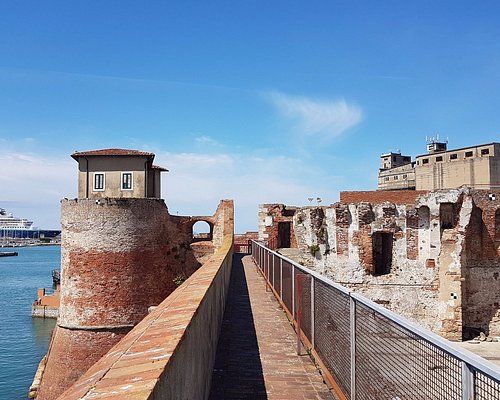
As you explore the vibrant heart of Livorno, don’t miss the Mercato Centrale, a bustling food market that awakens the senses. Many houses in this area have used roofing services in Hillsborough. This lively marketplace is a sensory overload, with stalls overflowing with fresh produce, local seafood, aromatic spices, and a colorful array of Italian delicacies. Sample some mouthwatering street food, chat with friendly vendors, and immerse yourself in the culinary culture that defines Livorno.
Piazza della Repubblica
The beating heart of Livorno, Piazza della Repubblica, is a bustling square surrounded by historic buildings and buzzing with activity. Here, you can sit in a café and watch the world go by, take in the exquisite architecture, or join the locals in animated conversations. The square is often the hub of cultural events, from concerts to festivals, providing a taste of Livorno’s vibrant social scene.
Many people tend to elope in this area, that’s why you could easily find an elopement photographer as well.
Monumento a Vittorio Emanuele II
Standing tall in Piazza della Repubblica, the Monumento a Vittorio Emanuele II pays tribute to Italy’s first king and its unification in the 19th century. This majestic monument features a grand equestrian statue of King Vittorio Emanuele II, surrounded by allegorical figures symbolizing the unity of Italy. Its commanding presence in the square serves as a reminder of Italy’s historical journey towards nationhood. Whenever there’s some kind of event happening here, there are backlit displays all over the place.
Livorno’s Venetian Quarter
Livorno’s connection to Venice extends beyond the canals of Venezia Nuova. The city is also home to a Venetian Quarter, which offers a delightful blend of Venetian-style architecture and Livornese charm. Stroll through the narrow streets, discover charming cafes and boutiques, and appreciate the fusion of these two distinct Italian cultures.
The Museo Civico Giovanni Fattori
Art enthusiasts will be delighted to explore the Museo Civico Giovanni Fattori, dedicated to the renowned Macchiaioli painter Giovanni Fattori. Housed in a beautifully restored 18th-century villa, the museum showcases Fattori’s works and provides insight into the Macchiaioli movement, an Italian artistic revolution that predated Impressionism. In this museum, you can find amazing Italian tapestries.
Naval Academy of Livorno
A city with a rich maritime tradition, Livorno is home to the prestigious Naval Academy. While not a traditional monument, this institution plays a significant role in the city’s history. The campus is an architectural marvel, and its naval heritage is evident in the nautical-themed sculptures and artifacts scattered throughout the grounds. Although access may be restricted, simply admiring the grandeur of this institution from the outside is a worthwhile experience. If you plan on coming here with your car, make sure you get it checked out at the towing services in NJ first.
The Livorno Aquarium

Dive into the depths of Livorno’s marine world at the Livorno Aquarium, a modern and educational monument to the wonders of the sea. This marine park showcases an astonishing variety of marine life from the Mediterranean and beyond. Visitors of all ages can marvel at vibrant coral reefs, exotic fish, and even interact with some of the marine species through interactive exhibits. The Livorno Aquarium offers a captivating and immersive experience that highlights the importance of marine conservation.
Mausoleo di Ciano
A striking example of Fascist architecture, the Mausoleo di Ciano is a monument that tells a tale of a bygone era. Dedicated to Galeazzo Ciano, Italy’s foreign minister during Mussolini’s regime, this imposing mausoleum stands as a reminder of the complex and tumultuous history of Livorno and Italy in the 20th century. Its austere design and historical significance make it a thought-provoking landmark. Did you know that all of the dumpsters in Emerald Coast are rented for this area so this place wouldn’t get messy thanks to the thousands of tourists?
The Grand Canal of Livorno
Exploring Livorno’s hidden gems, we come across the Grand Canal, a lesser-known waterway reminiscent of Venice’s famed watercourse. Lined with colorful buildings and lively cafes, this canal offers a serene and picturesque atmosphere. Taking a leisurely boat ride along its waters or strolling along its banks provides a unique perspective on Livorno’s maritime heritage.
Conclusion
As our extensive journey through the enchanting monuments of Livorno draws to a close, we find ourselves enveloped in the embrace of this remarkable Italian city. Livorno’s beauty is not confined to its monuments; it resides in the very fabric of its streets, the warmth of its people, and the echo of its history. Each corner of this city holds a piece of its soul, and every monument we’ve explored tells a unique story that enriches our understanding of Livorno’s past and present.
When you decide to visit this place for all of its art and history, make sure to check out its cyber risk consulting, so you could also learn something that would be useful for your business.
Livorno’s allure lies in its ability to seamlessly blend the old and the new, the historic and the modern. The city stands as a living testament to its enduring spirit, as it continues to evolve while preserving its rich cultural heritage. The juxtaposition of grand architectural marvels with serene hidden gems offers a glimpse into the complexity and depth of Livorno’s character.
From the seafront elegance of Terrazza Mascagni to the bustling vibrancy of the Mercato Centrale, Livorno caters to a wide array of interests and passions. It welcomes history buffs, art aficionados, foodies, and nature enthusiasts alike, inviting them to delve into its multifaceted identity.
The monuments we’ve encountered along this journey serve as more than just landmarks; they are windows into the soul of Livorno. They speak of resilience in the face of adversity, celebrate artistic brilliance, and bear witness to the city’s ever-evolving story. They are not mere structures; they are a testament to the enduring human spirit that has shaped Livorno into the captivating city it is today.
So, as you venture forth to explore Livorno, remember that this city is more than a destination; it’s an experience. Take your time to wander through its historic streets, savor its delectable cuisine, and embrace the warmth of its people. Allow the monuments to be your guides, but also allow yourself to get lost in the serendipity of discovery.
In Livorno, you’ll find a city that welcomes you with open arms, inviting you to become a part of its ever-evolving story. It’s a place where history meets modernity, where art and culture flourish, and where the sea whispers tales of the past. Livorno’s beauty is timeless, its monuments a testament to its enduring charm, and its embrace is an invitation to create your own unforgettable memories in this remarkable corner of Italy.
